
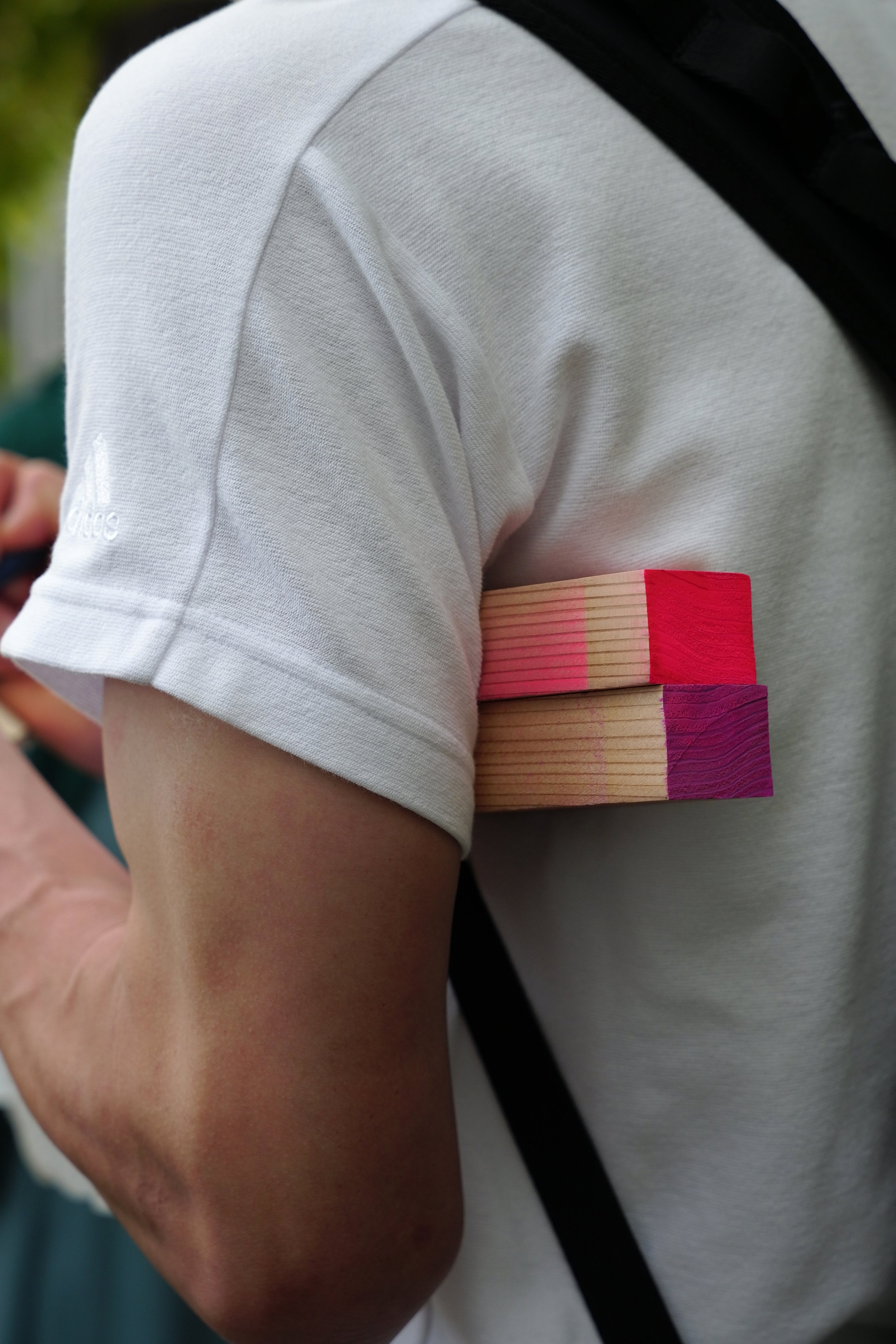
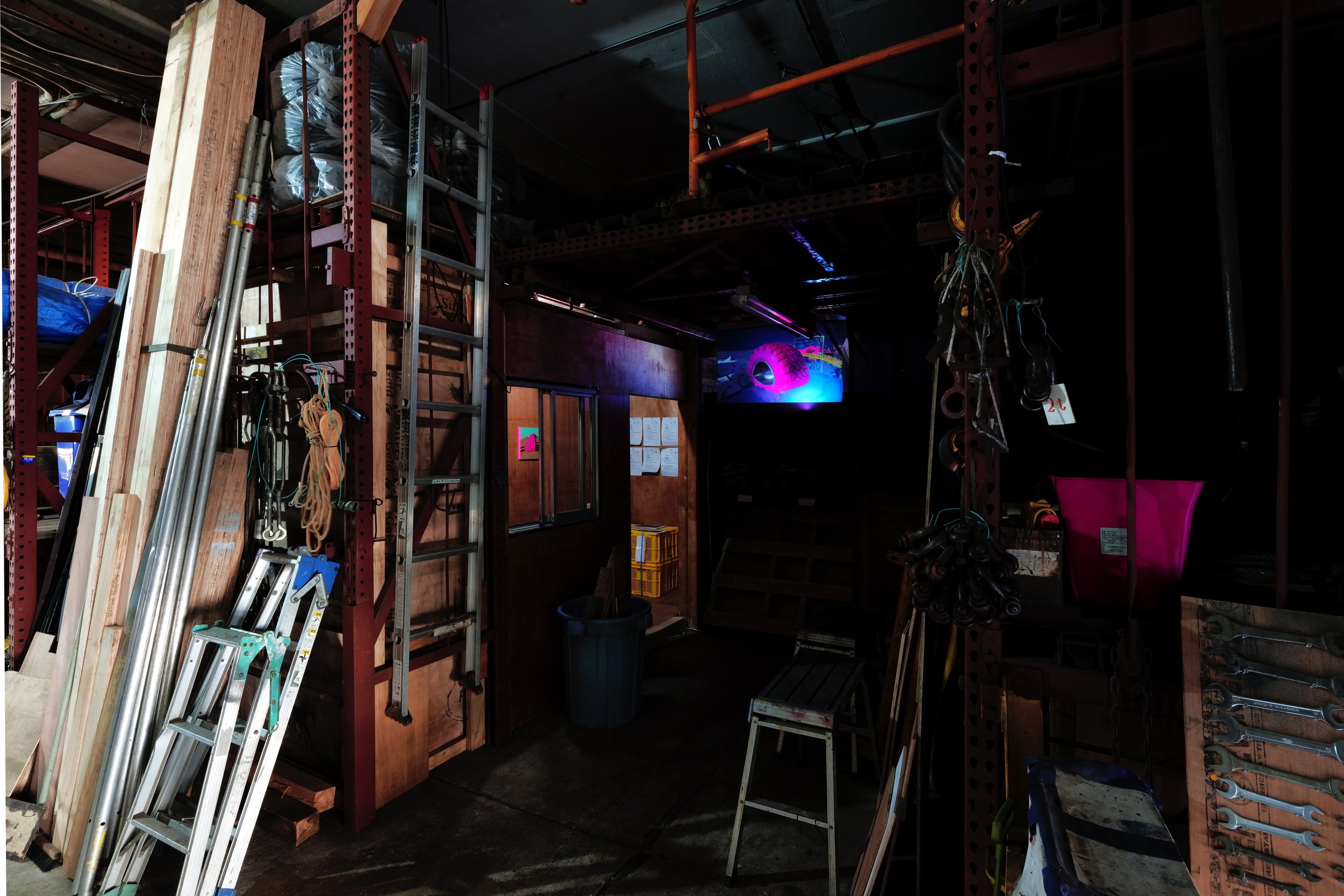


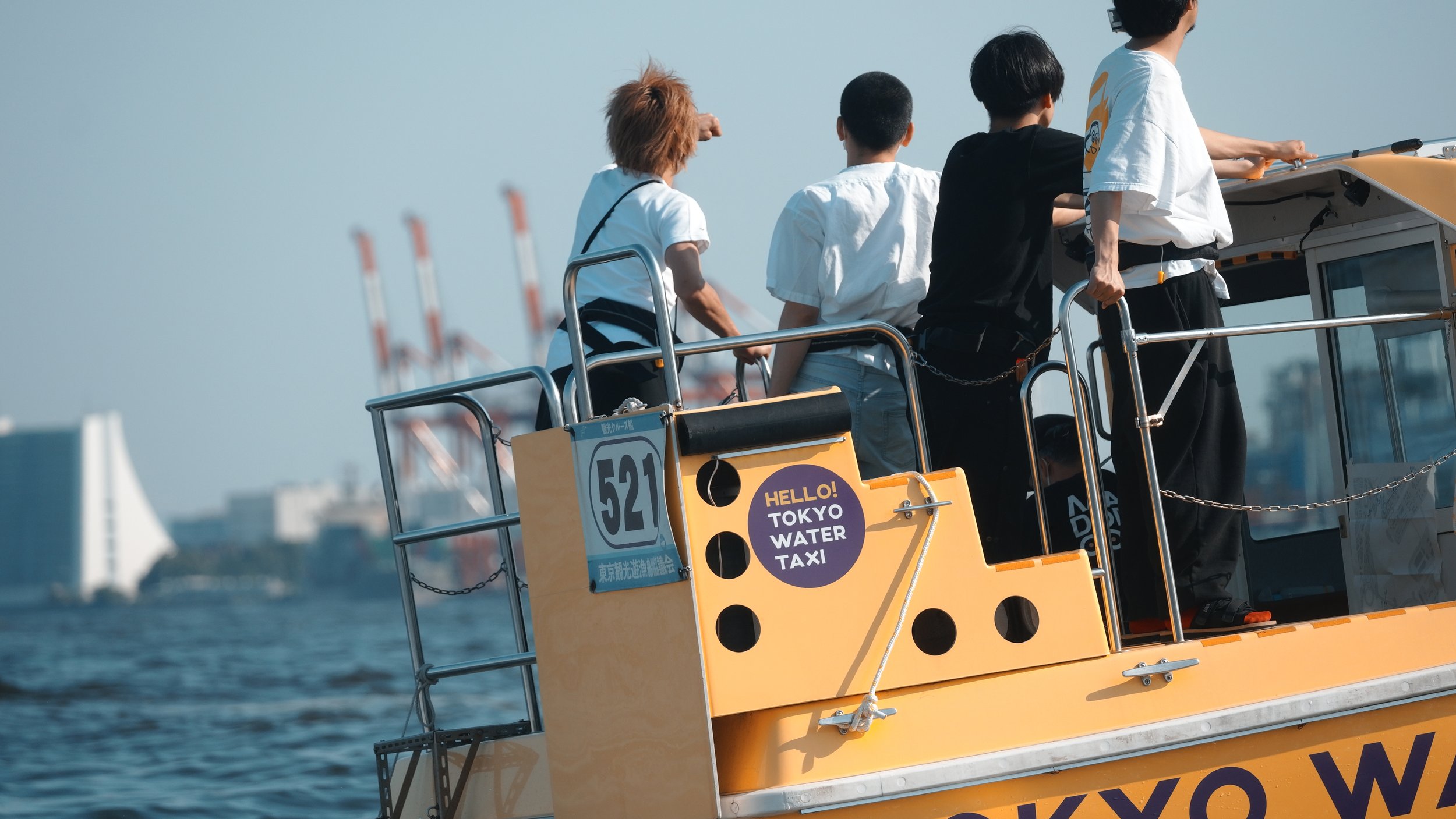
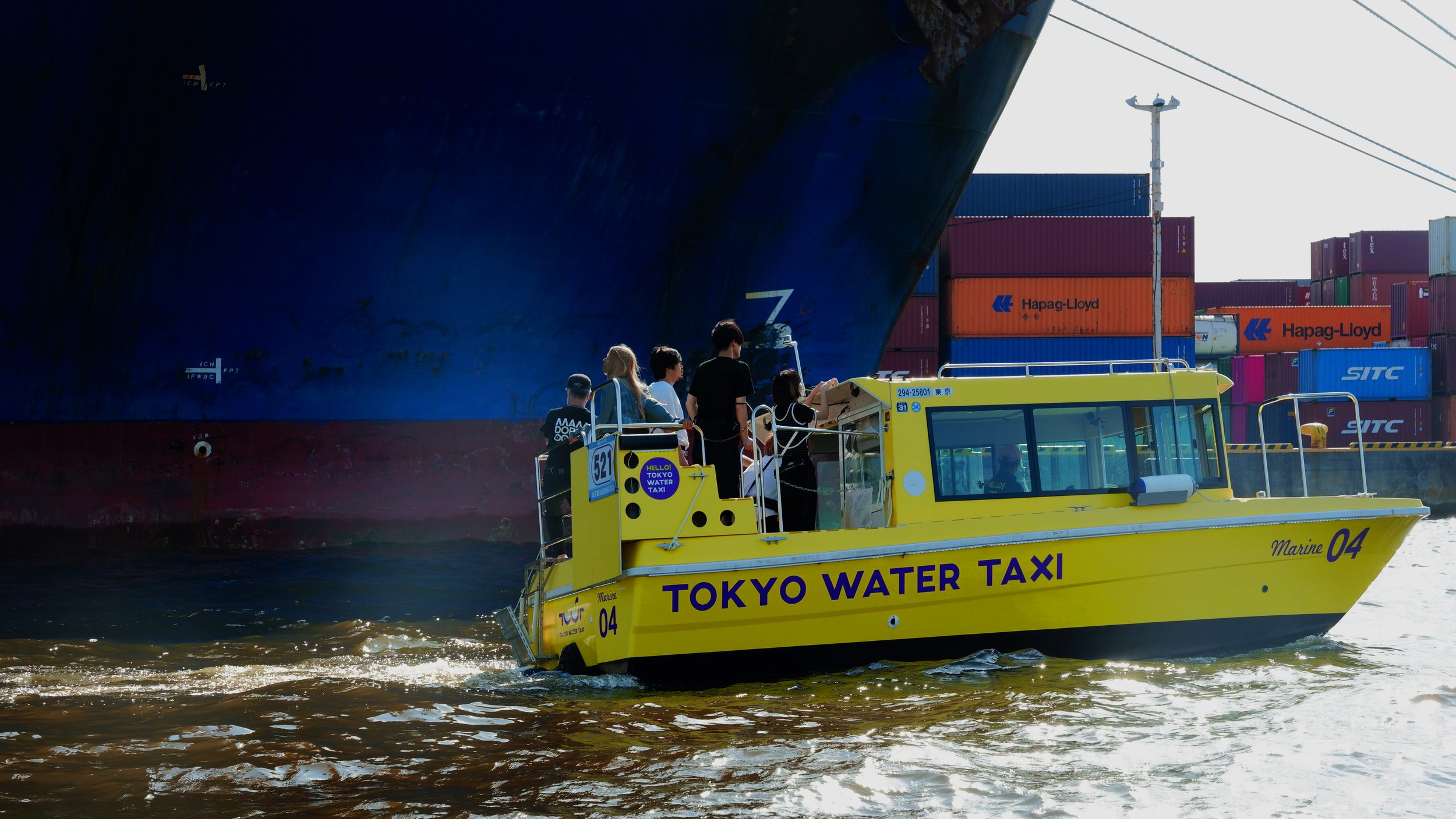
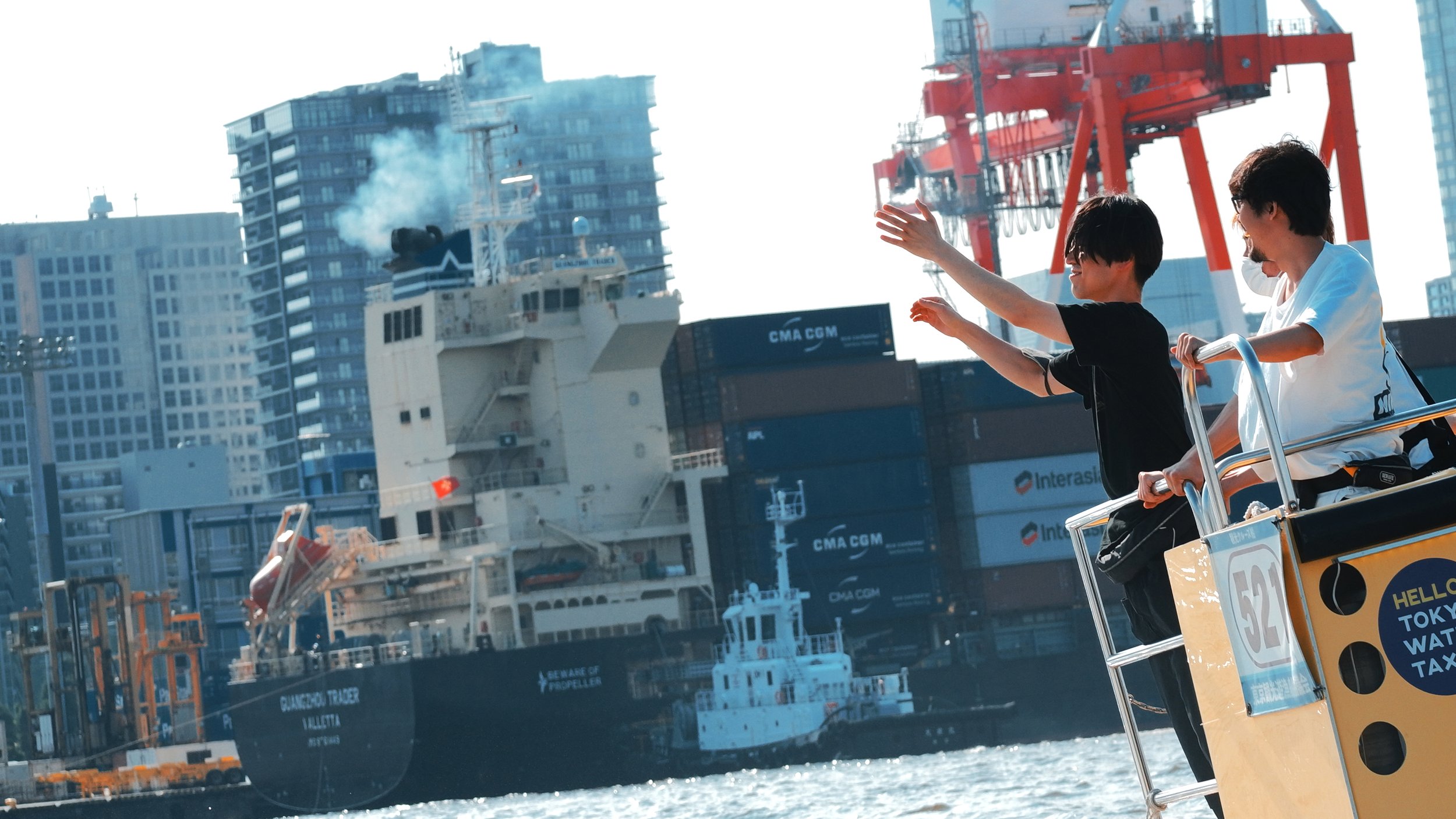
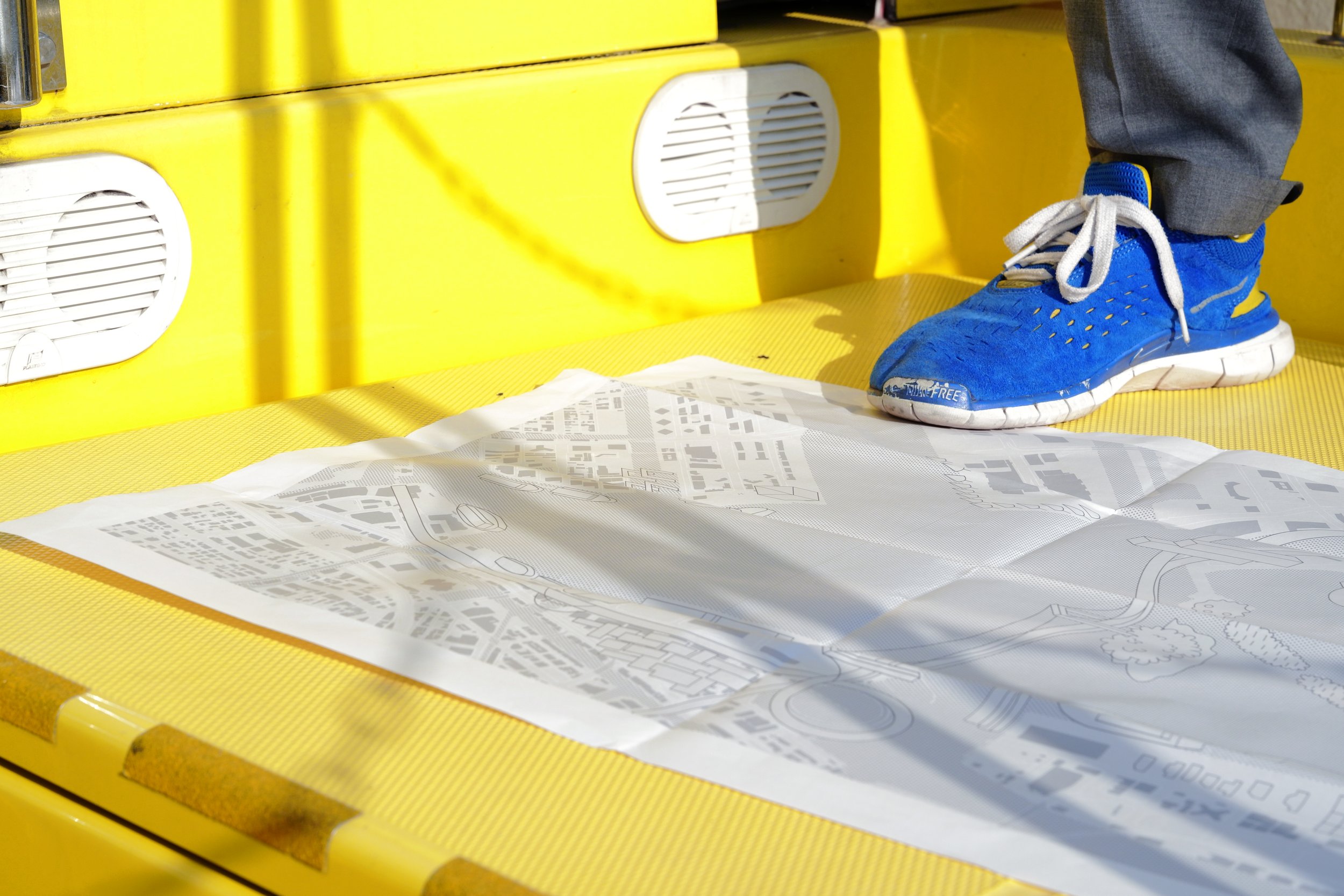
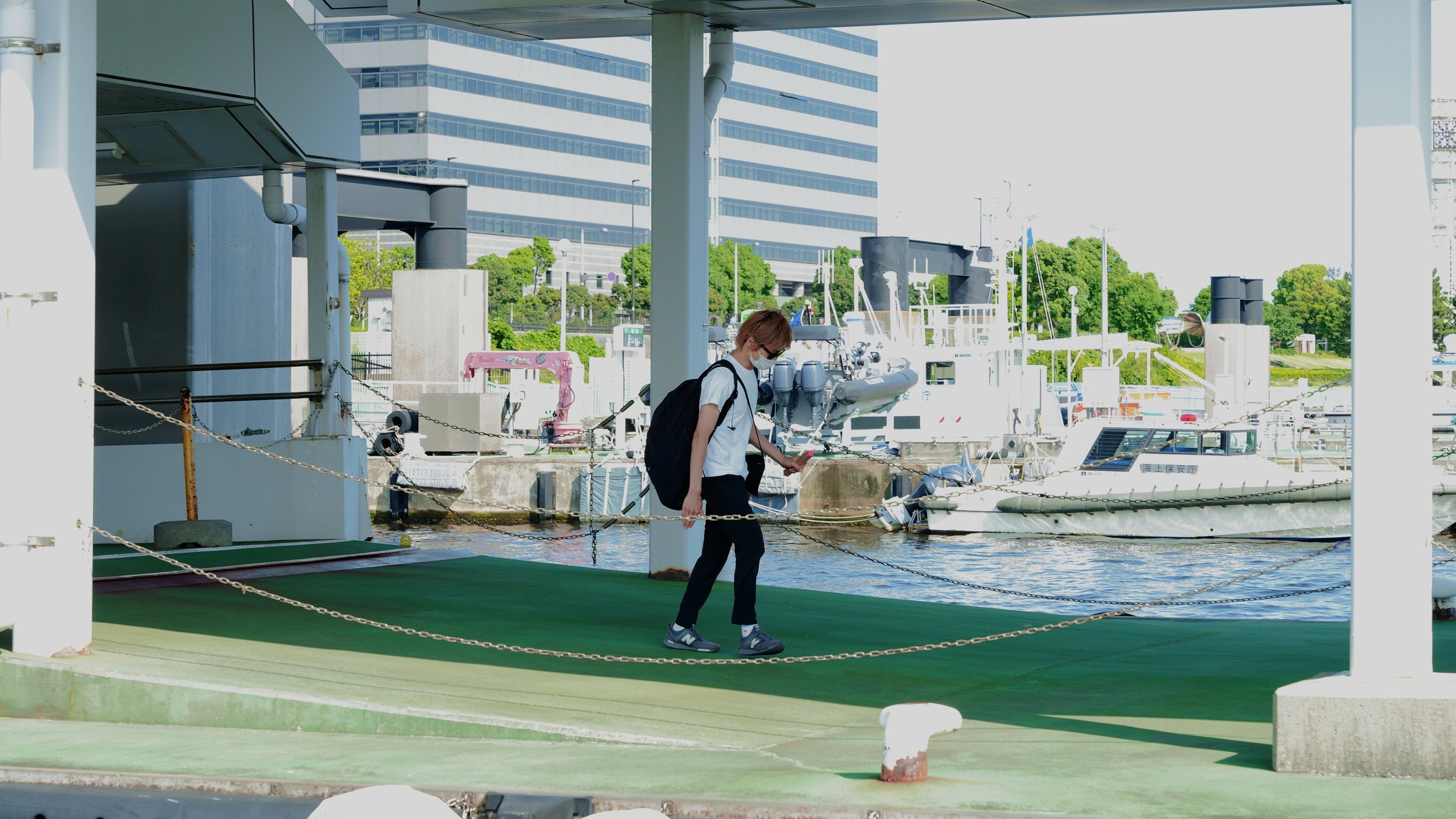

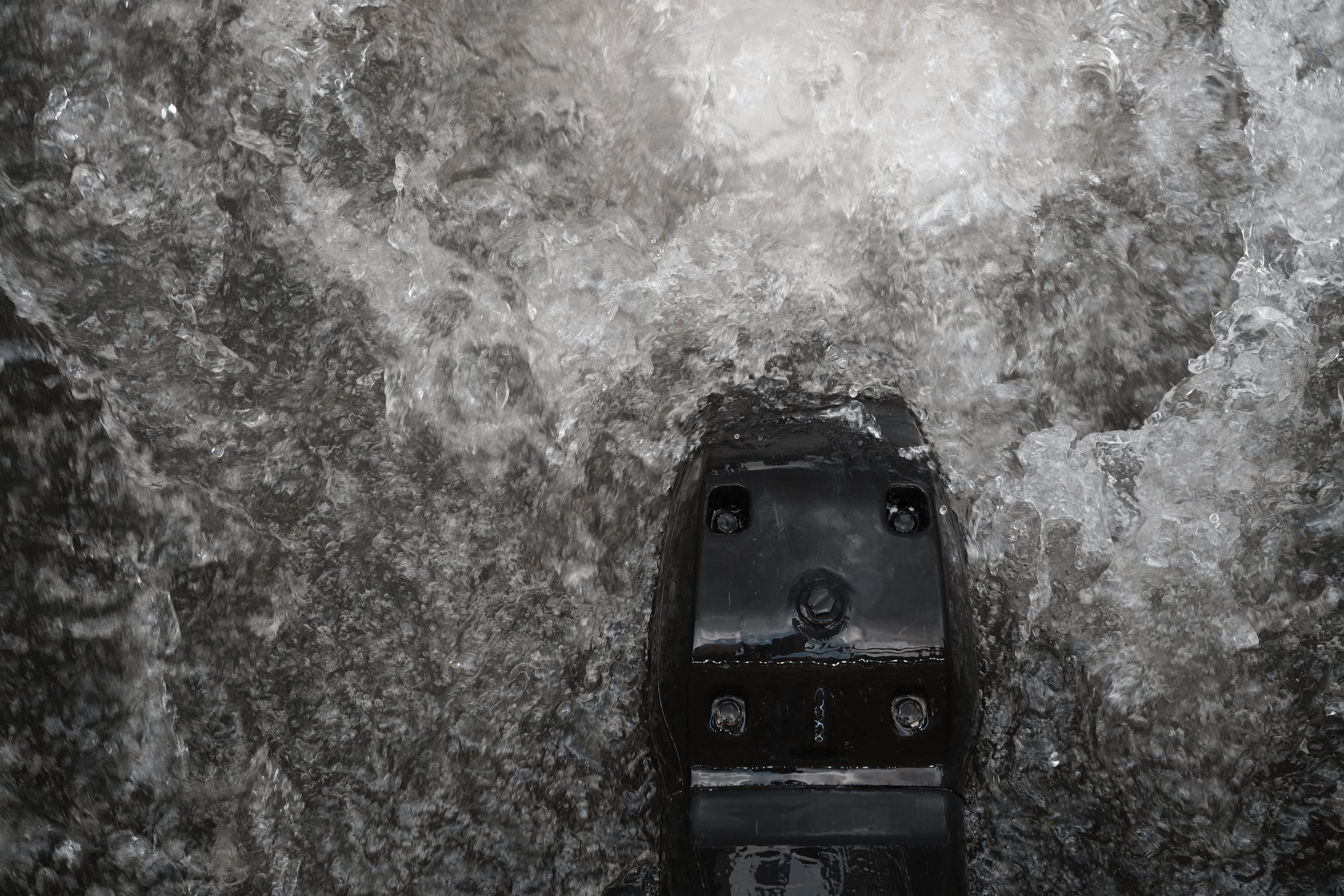
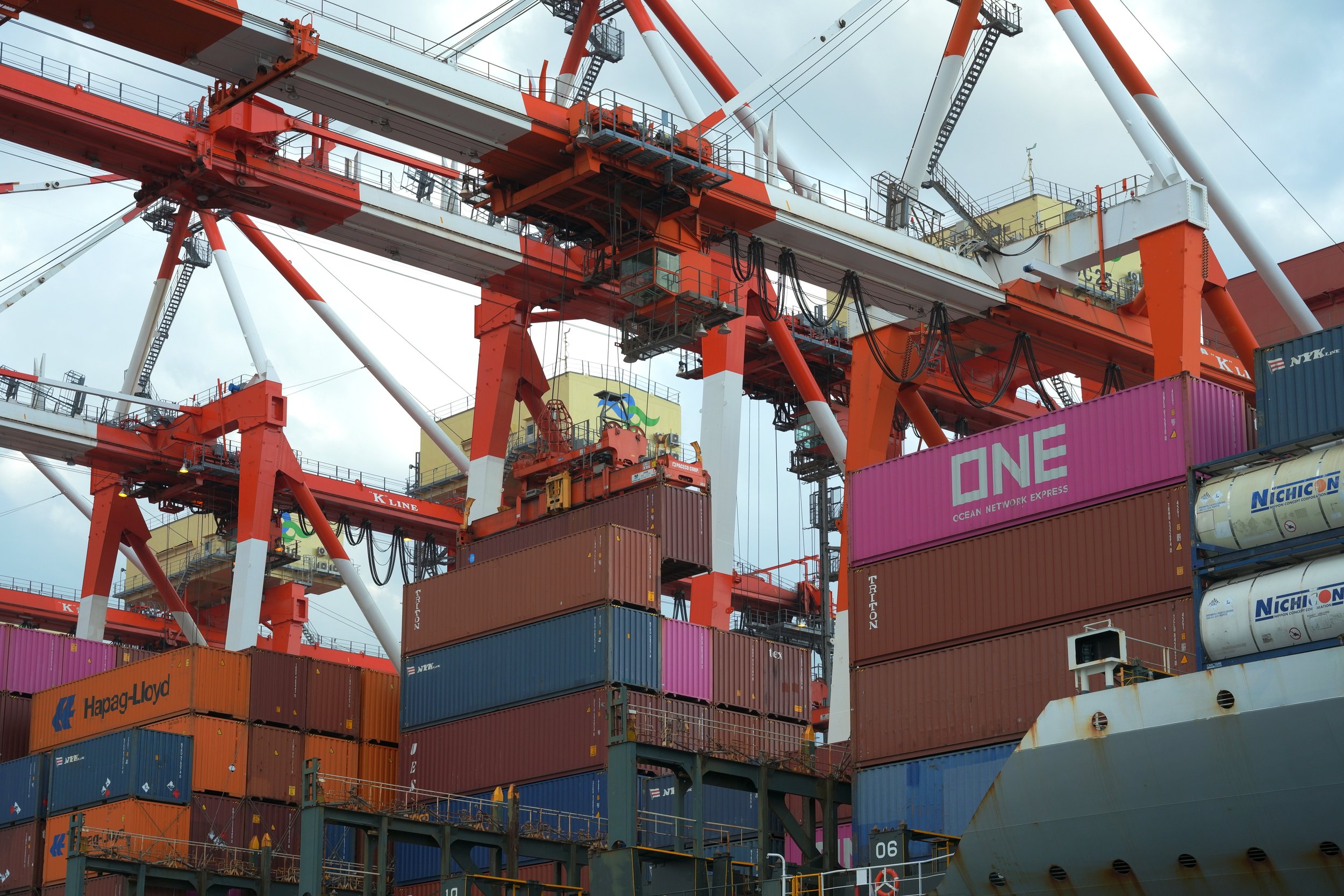
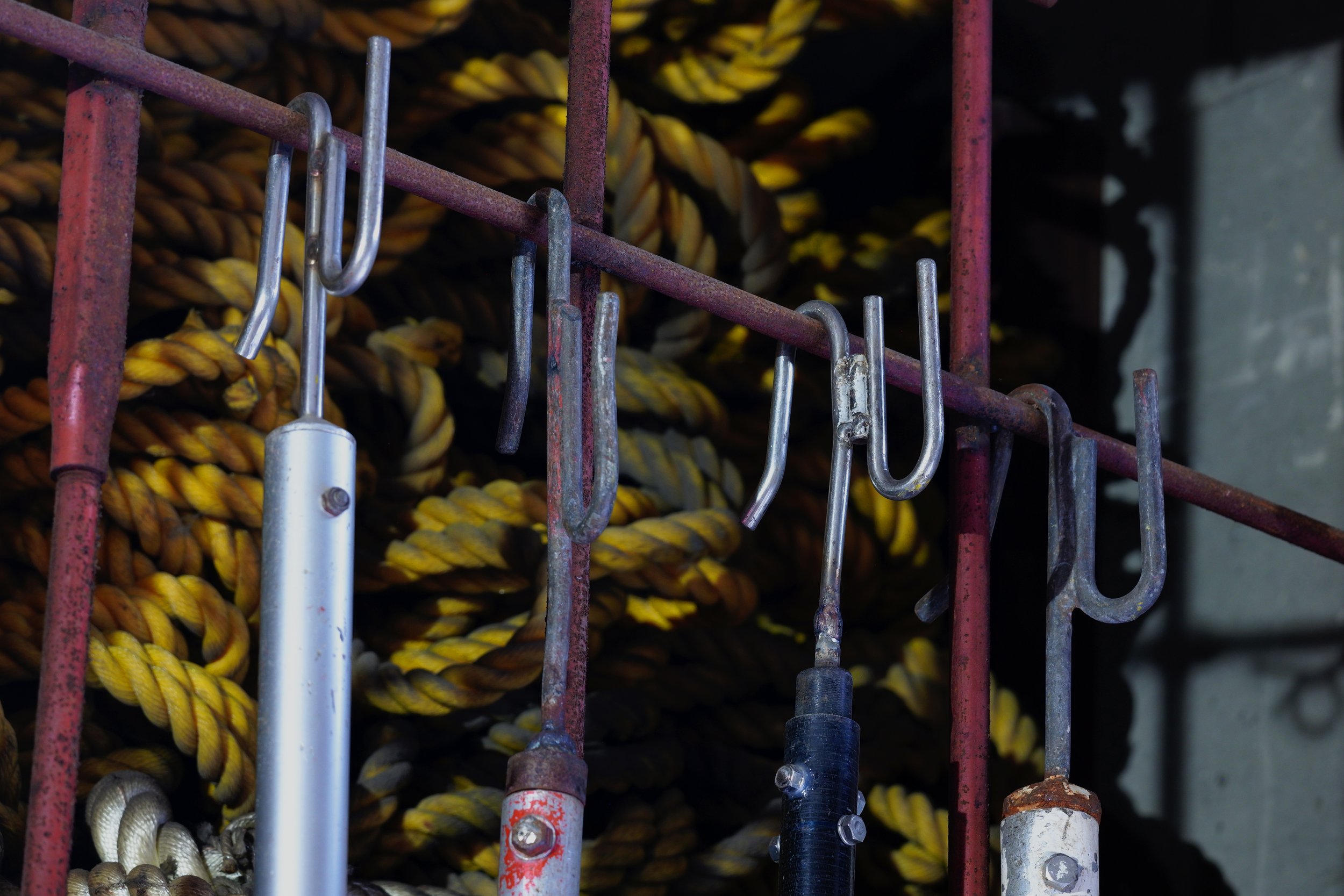


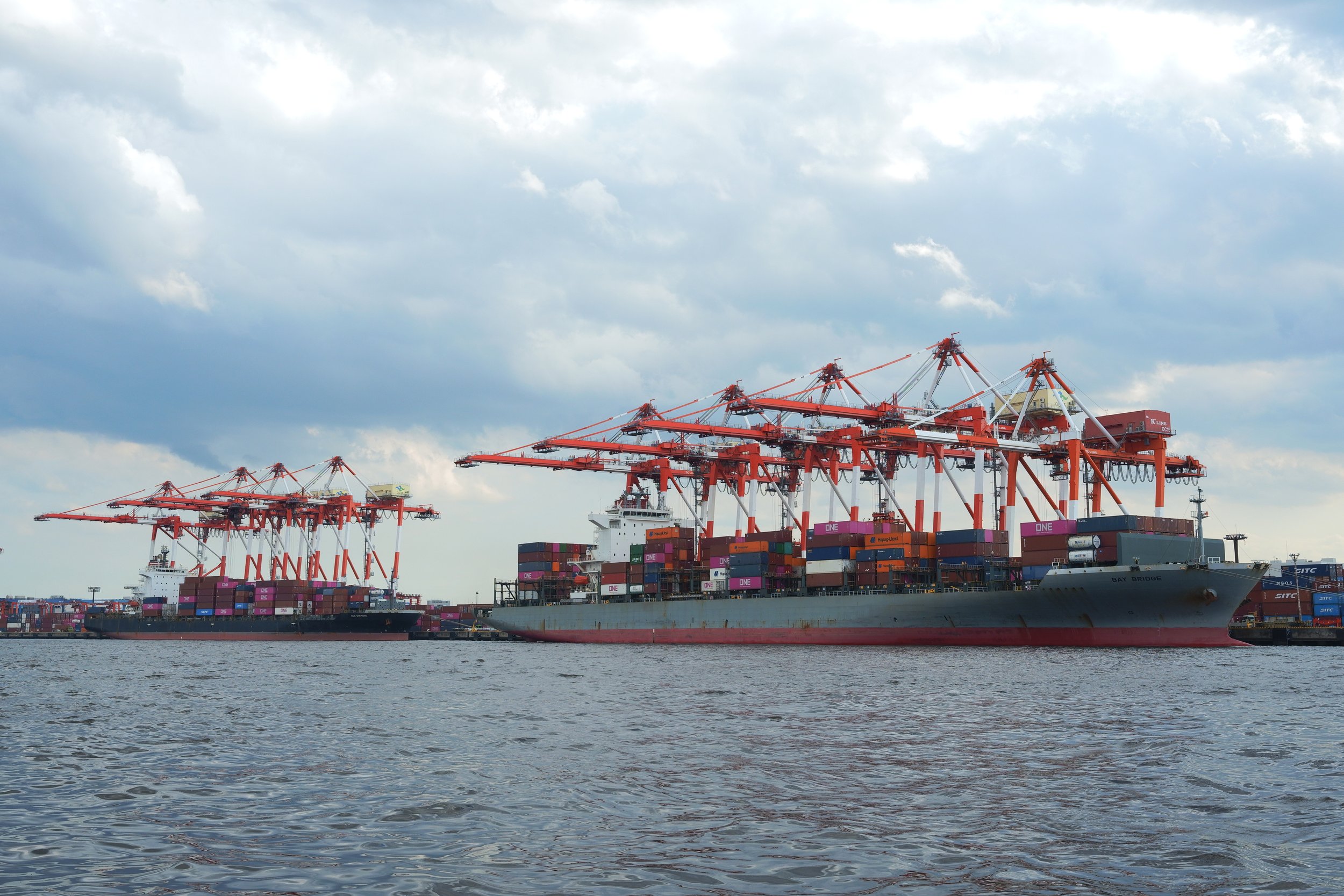
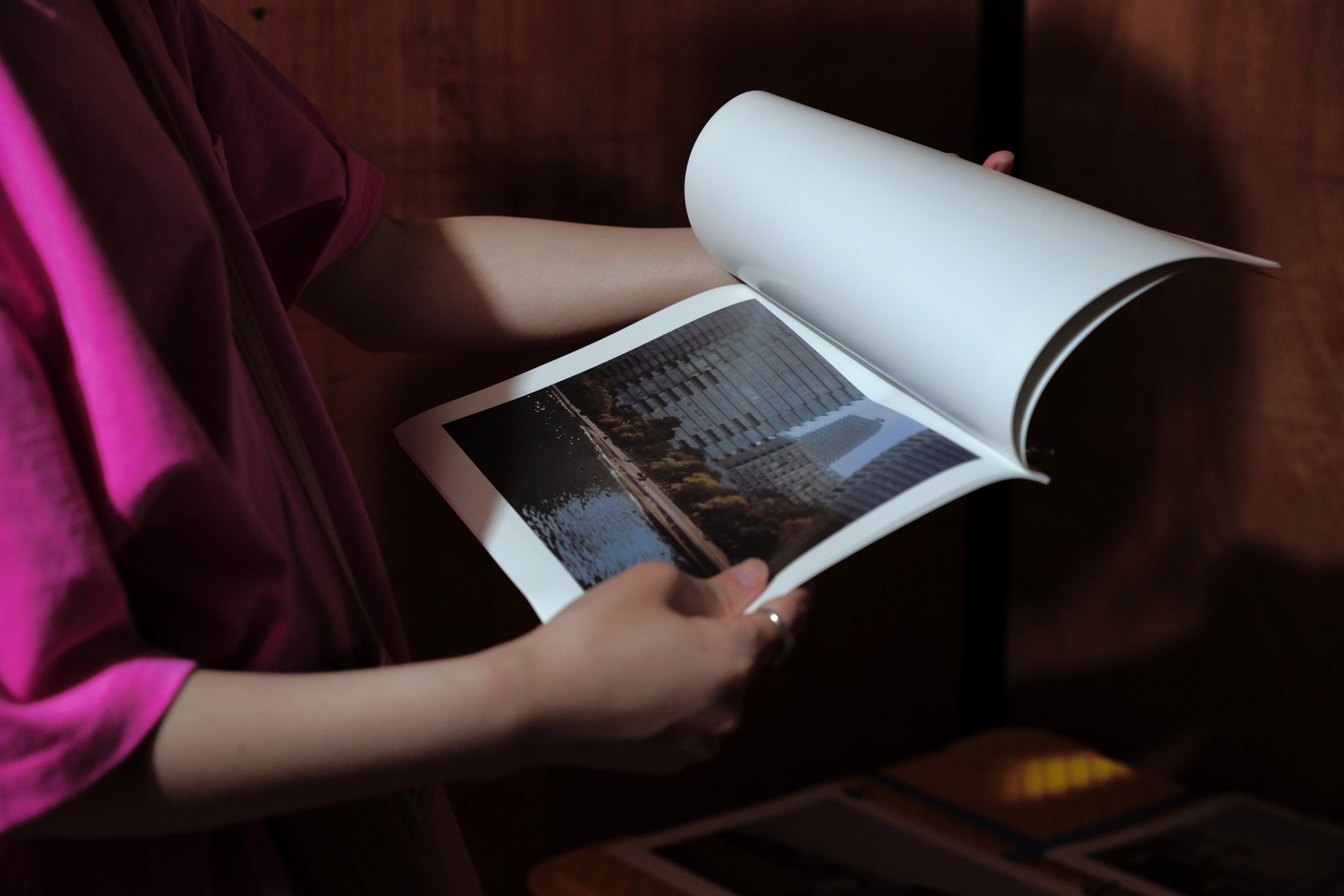


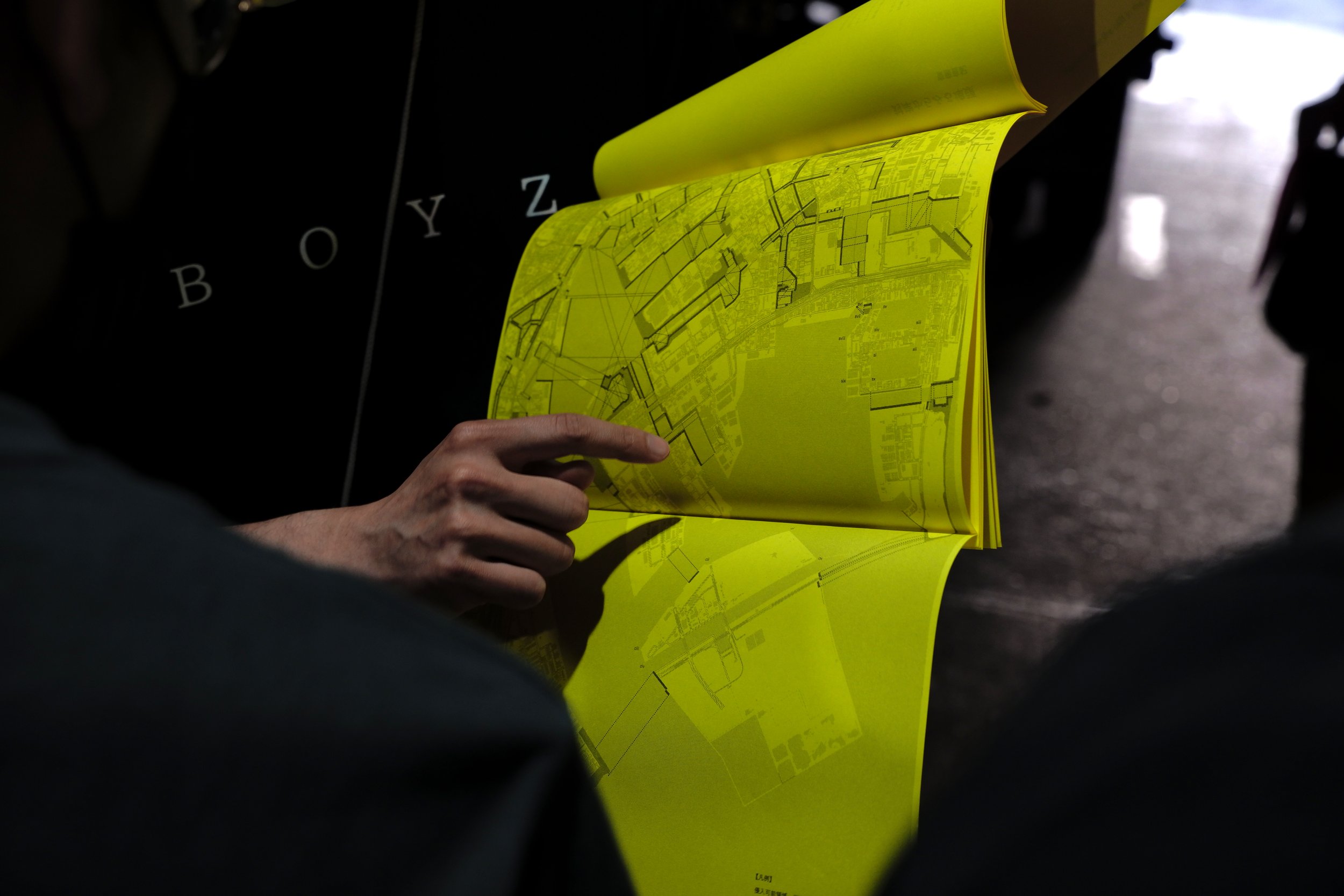
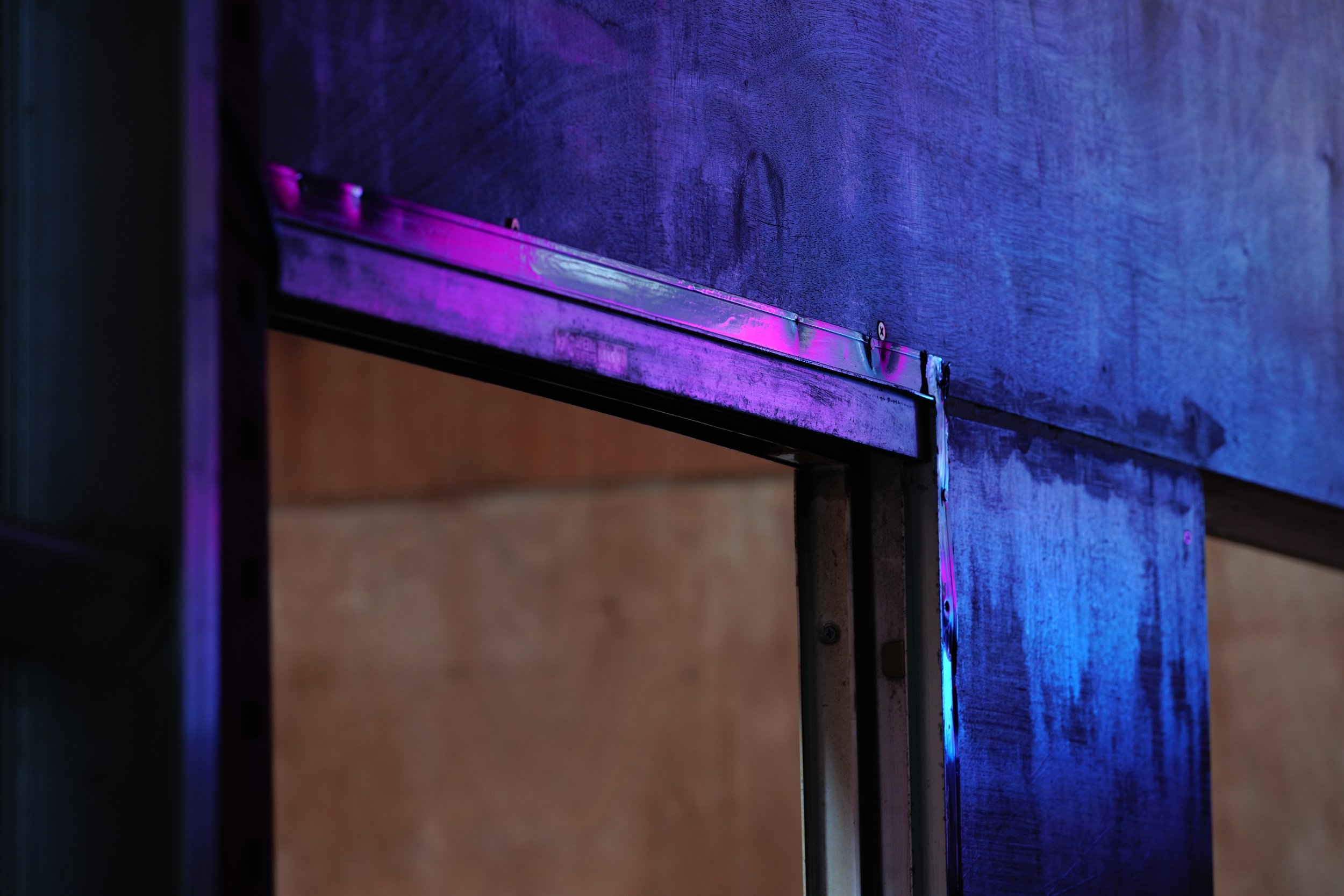
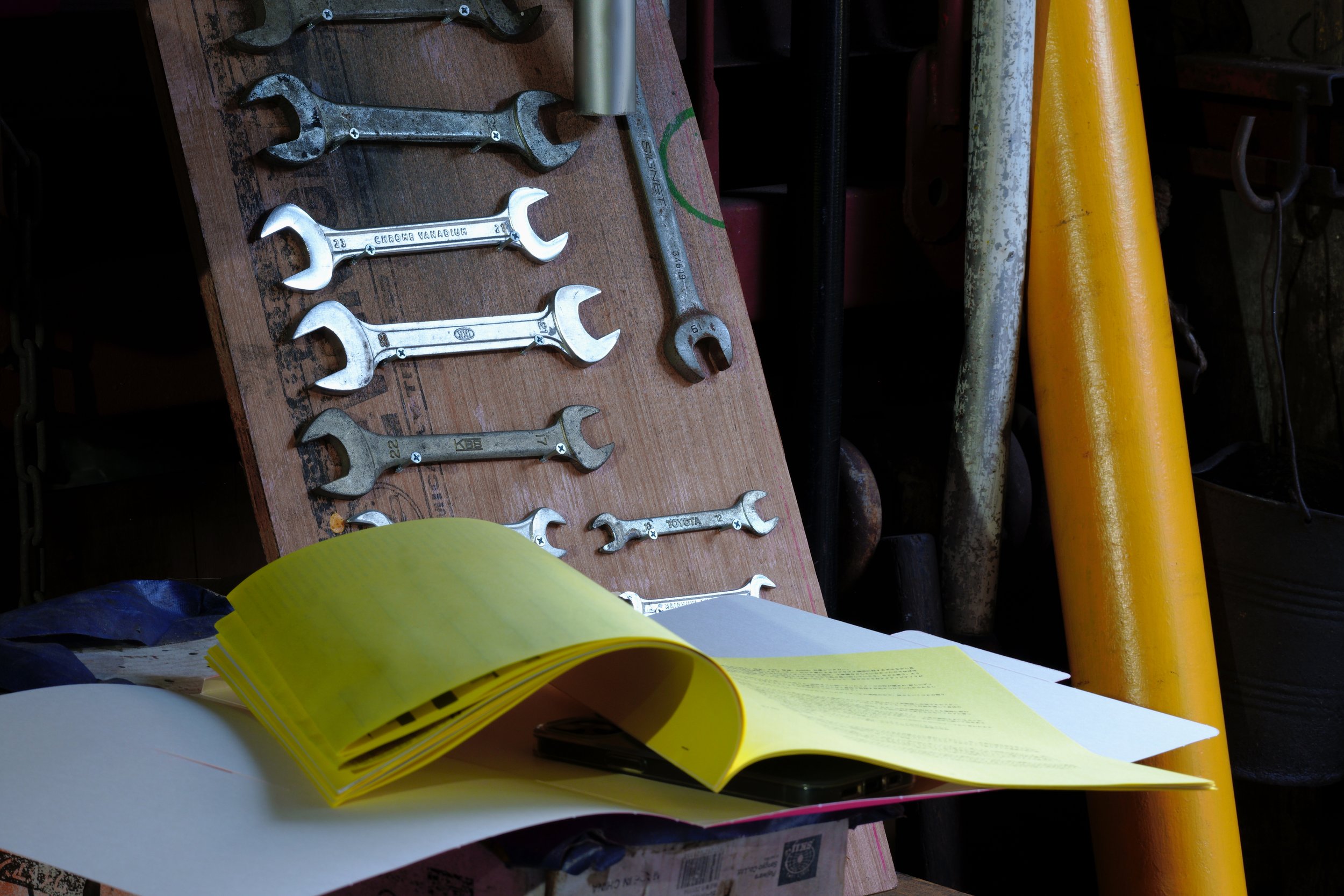

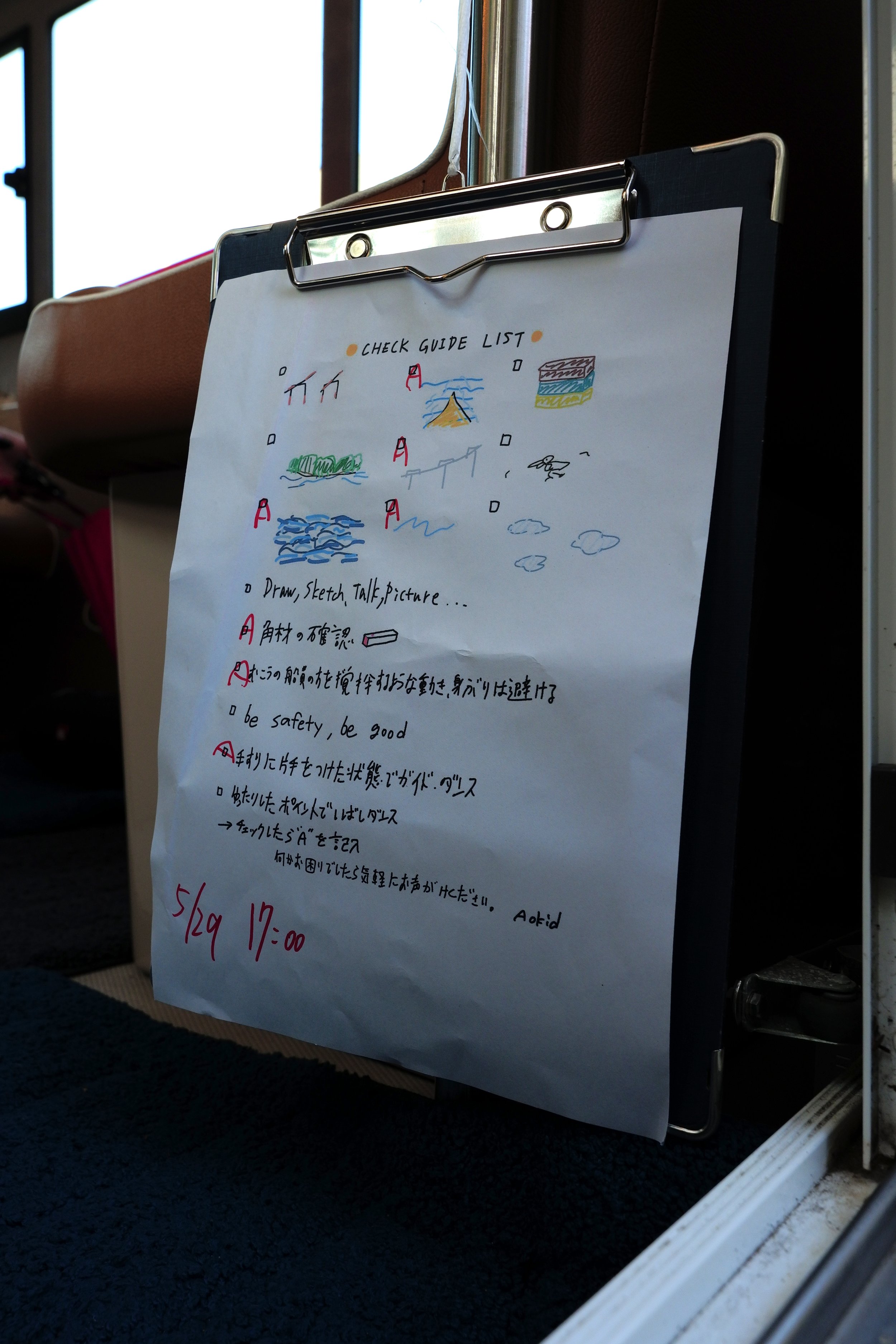





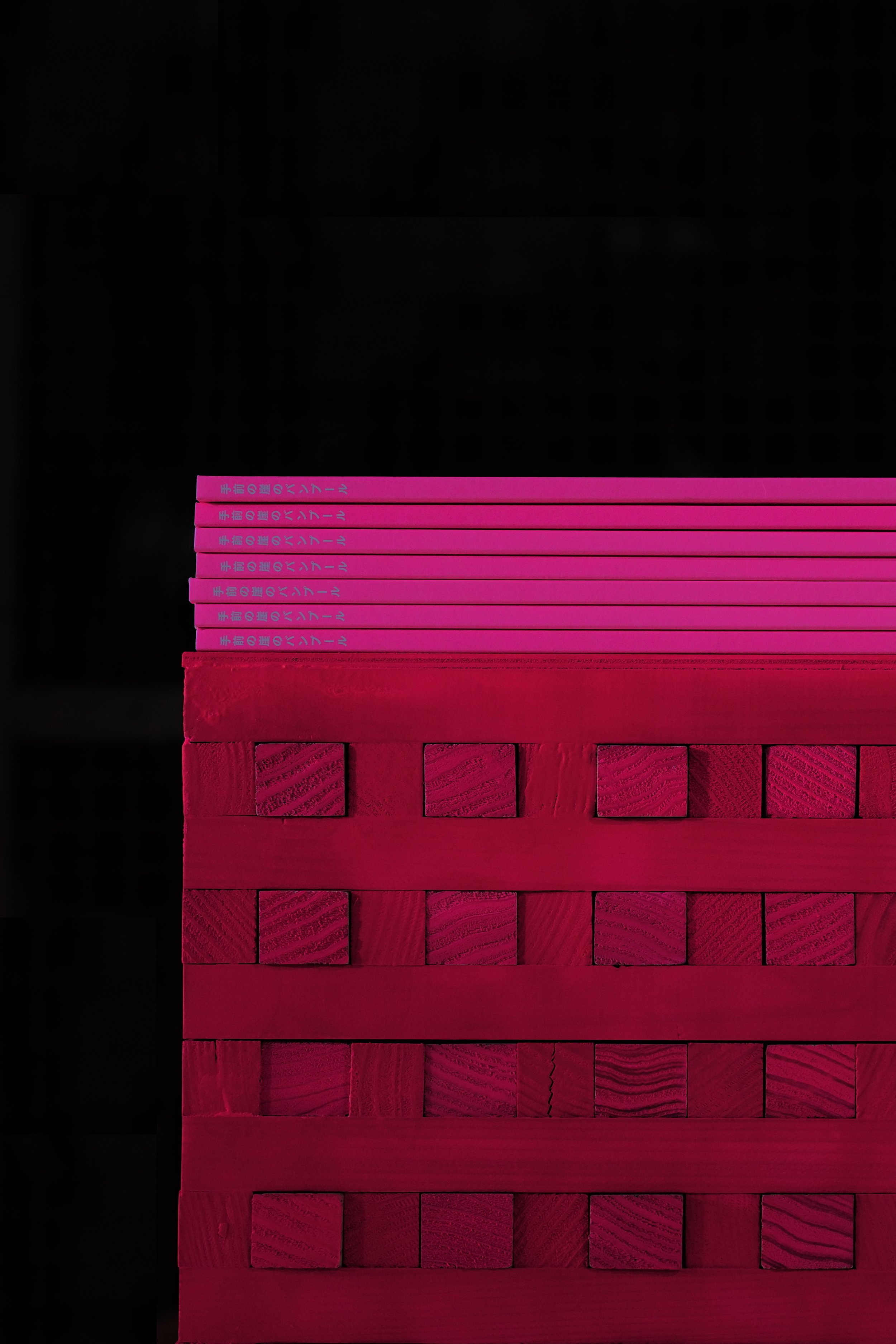
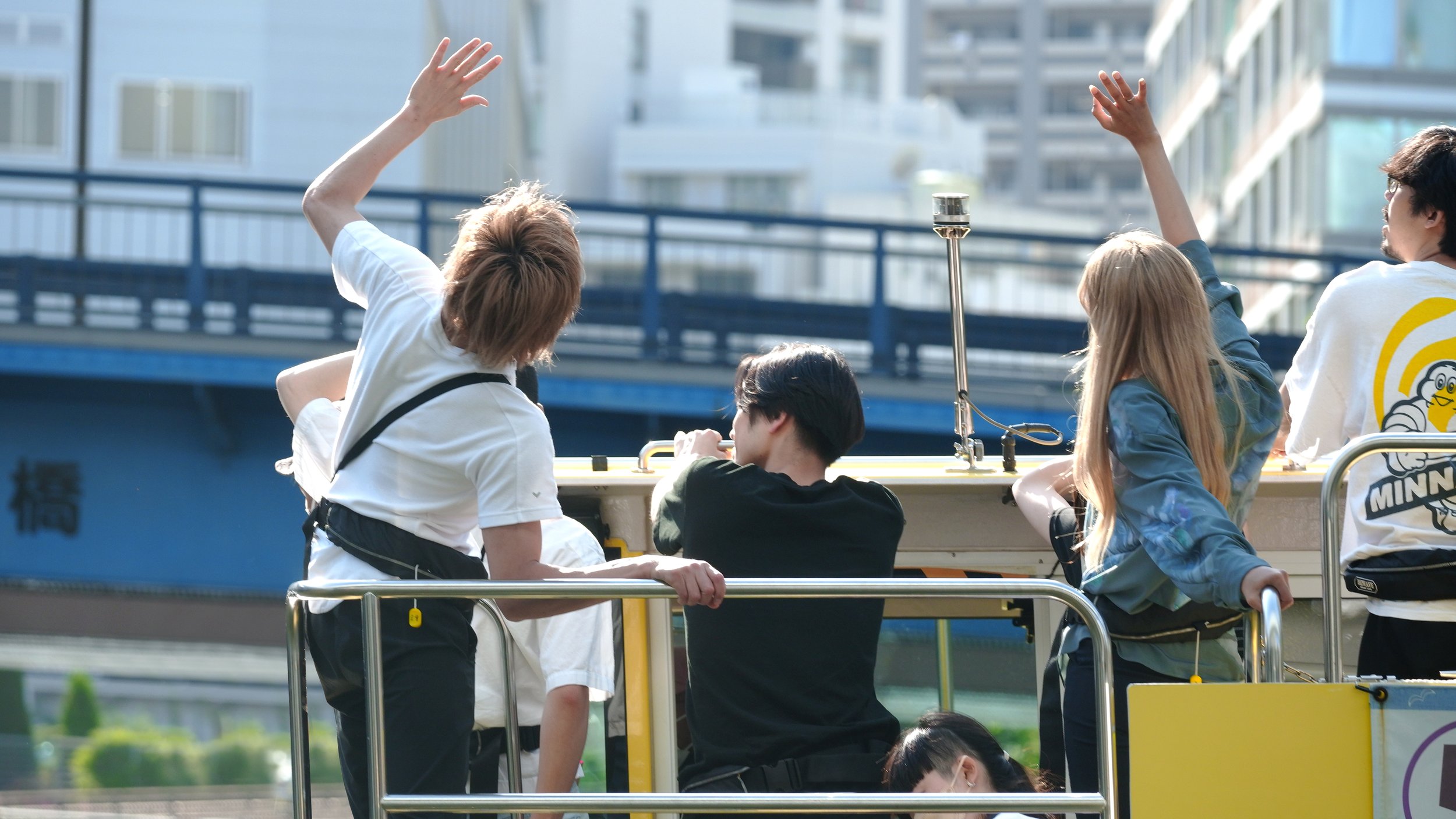
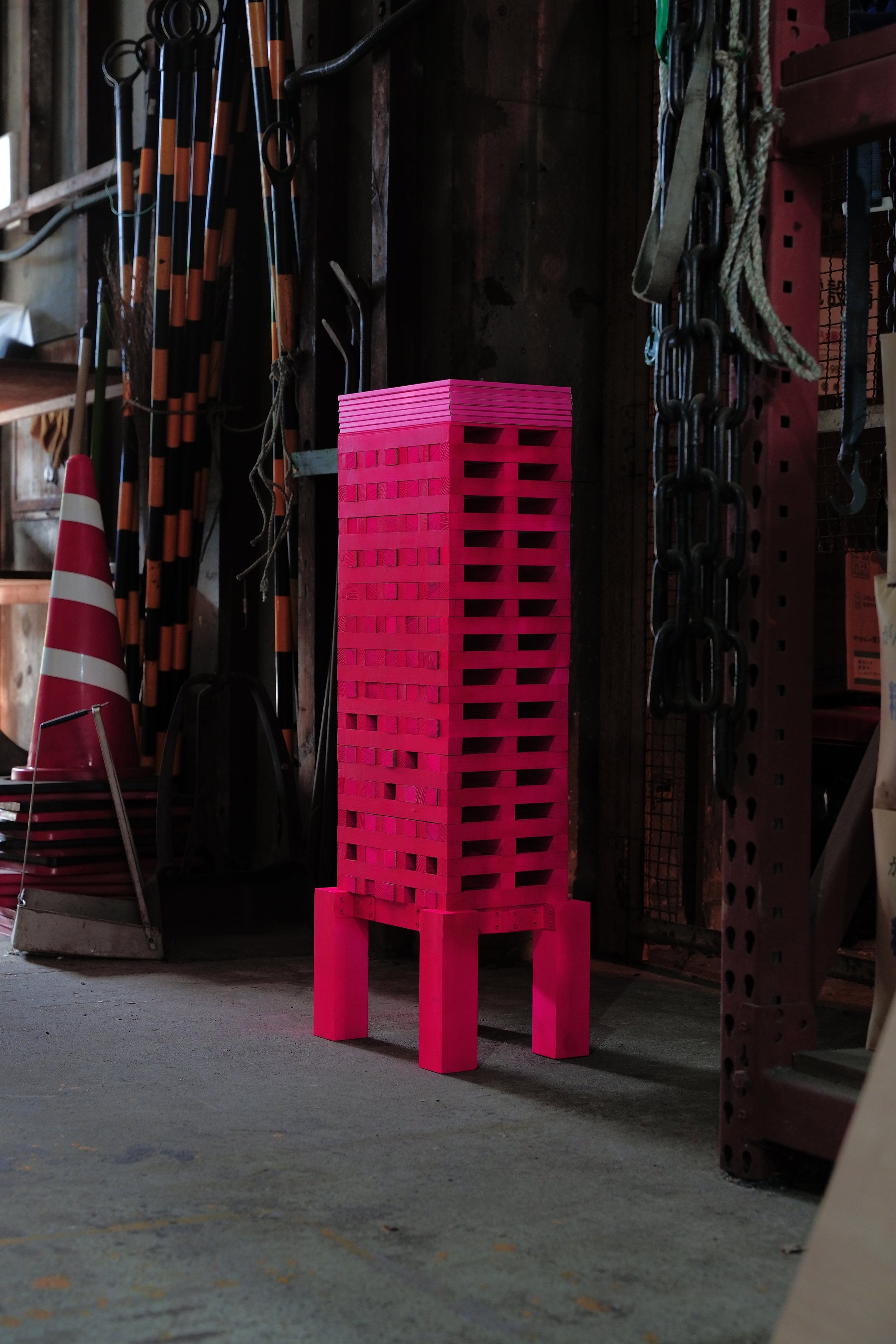
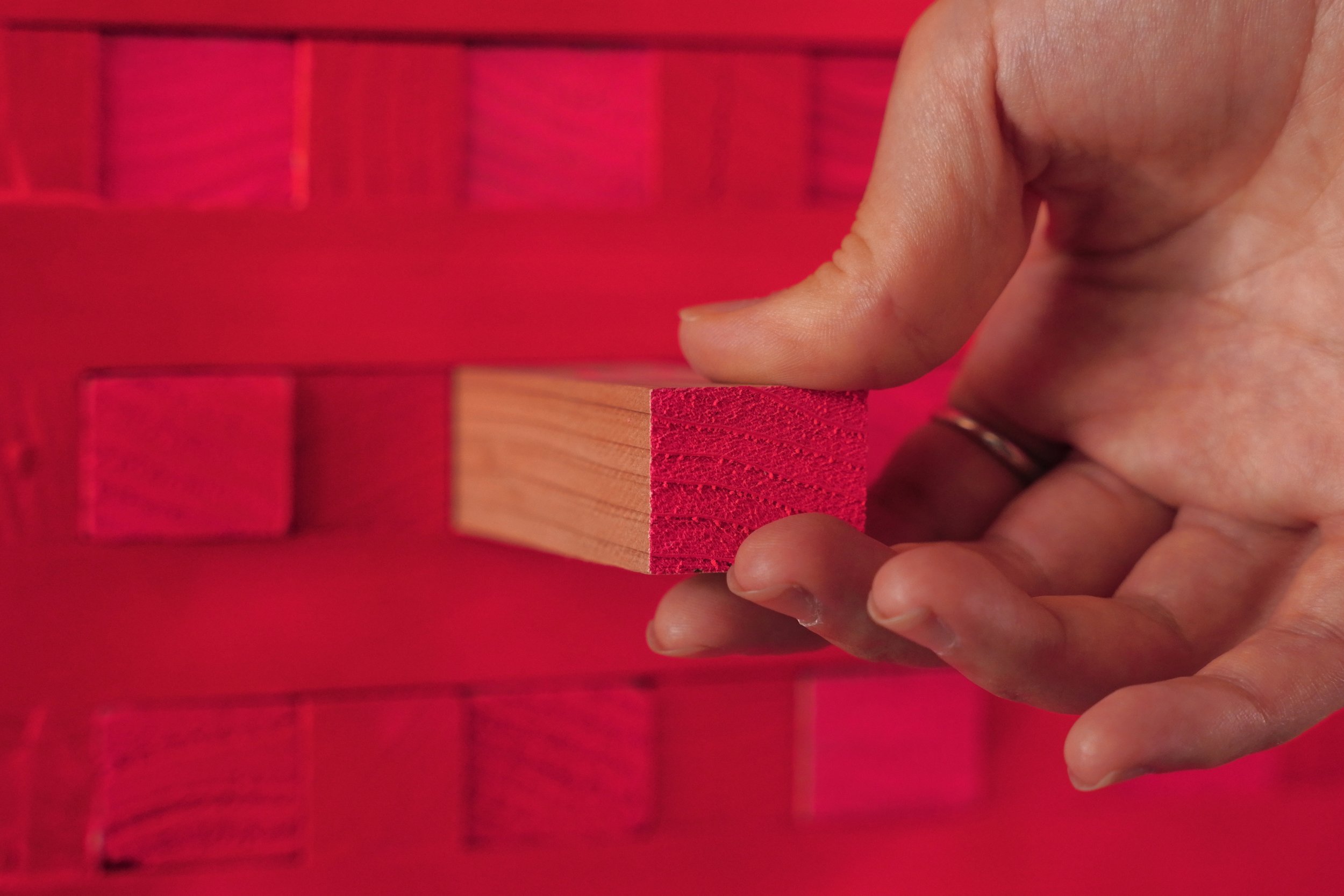
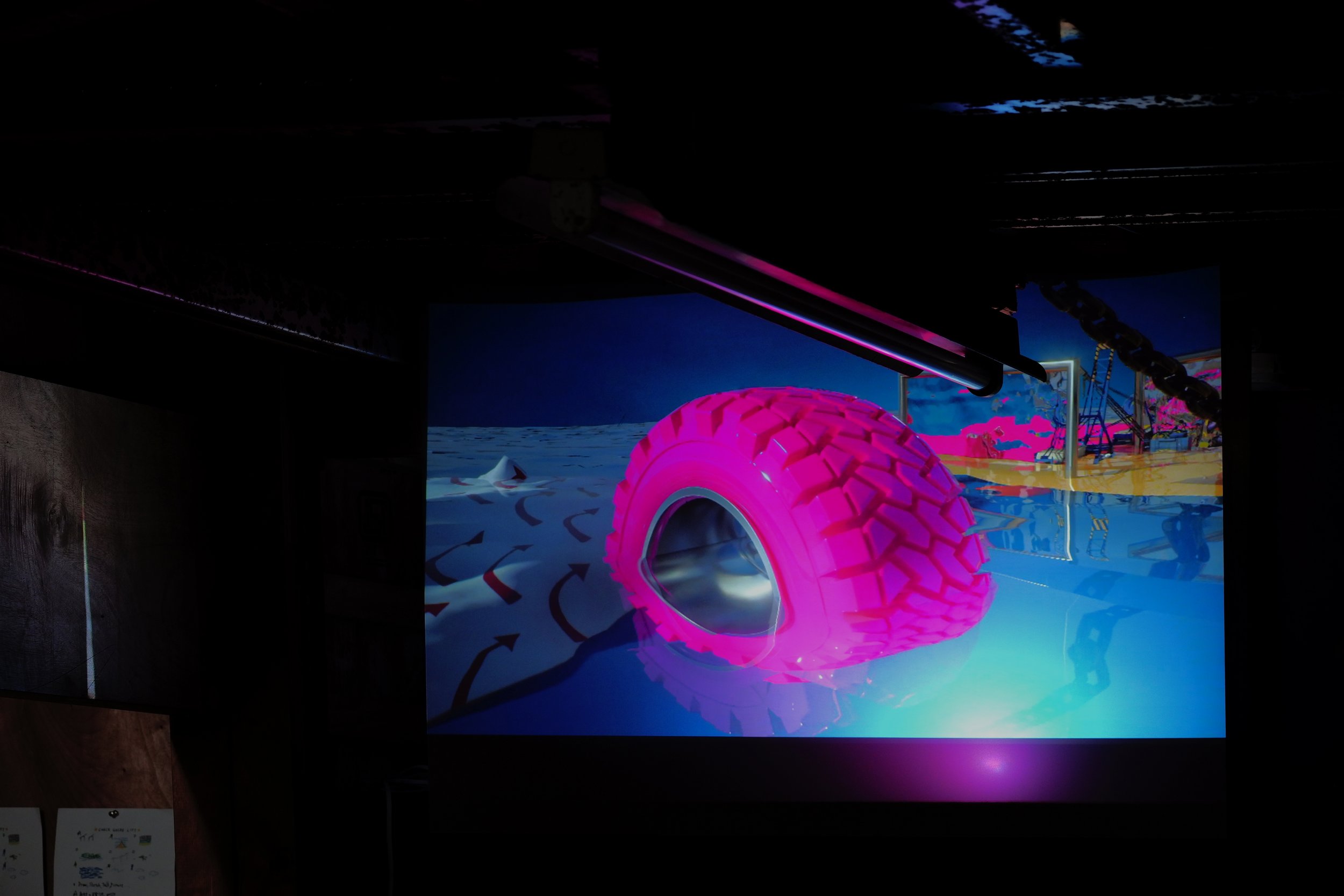
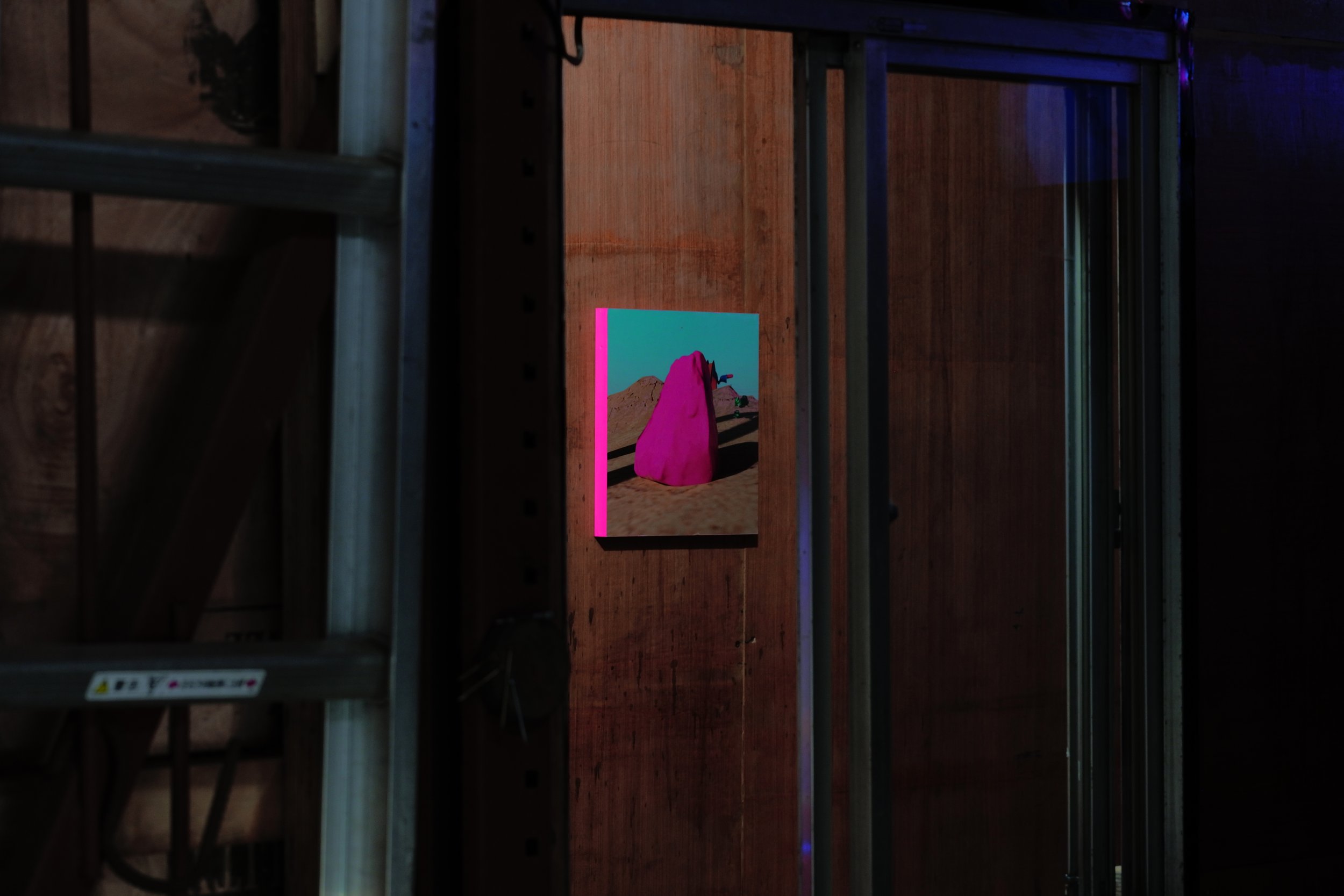



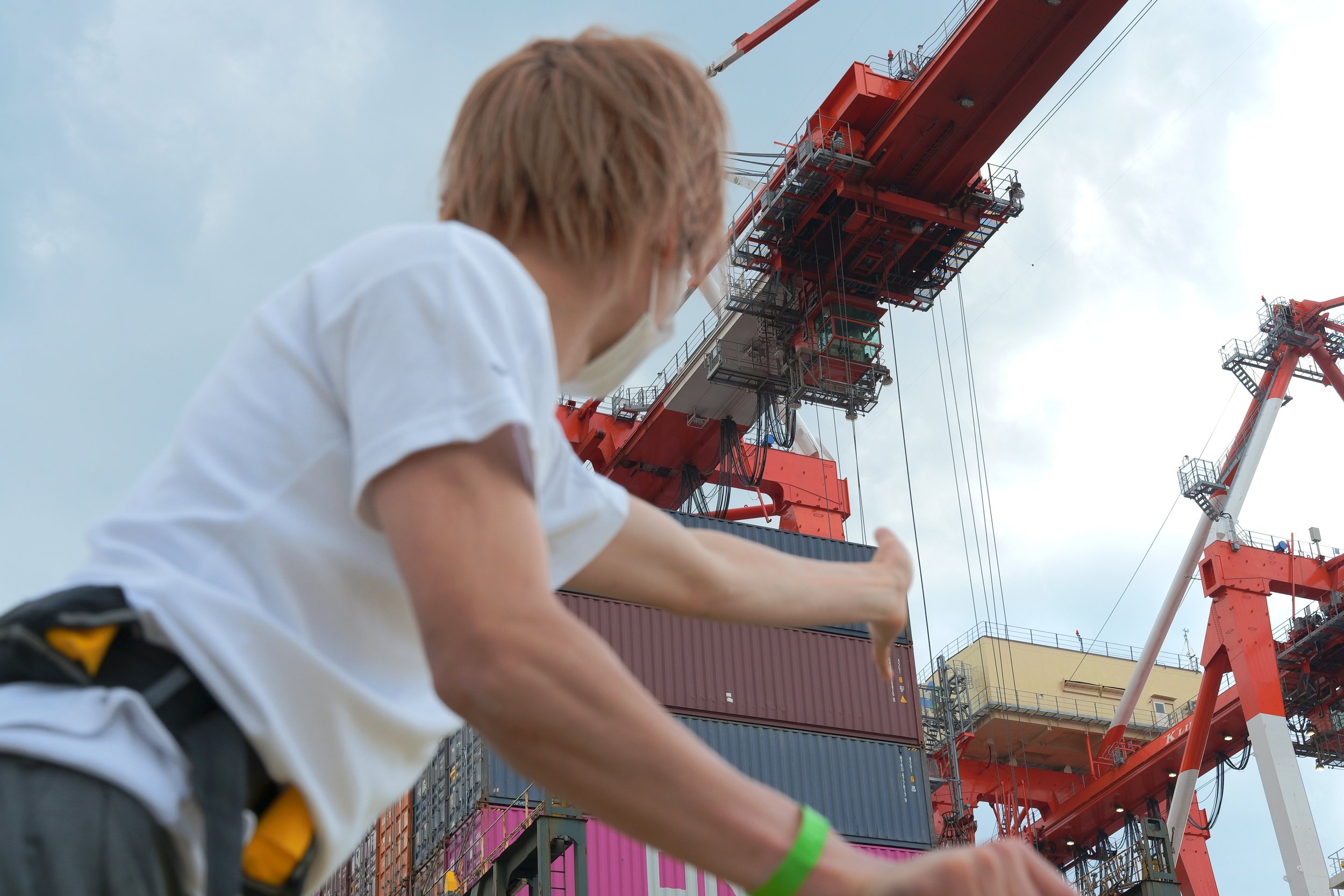
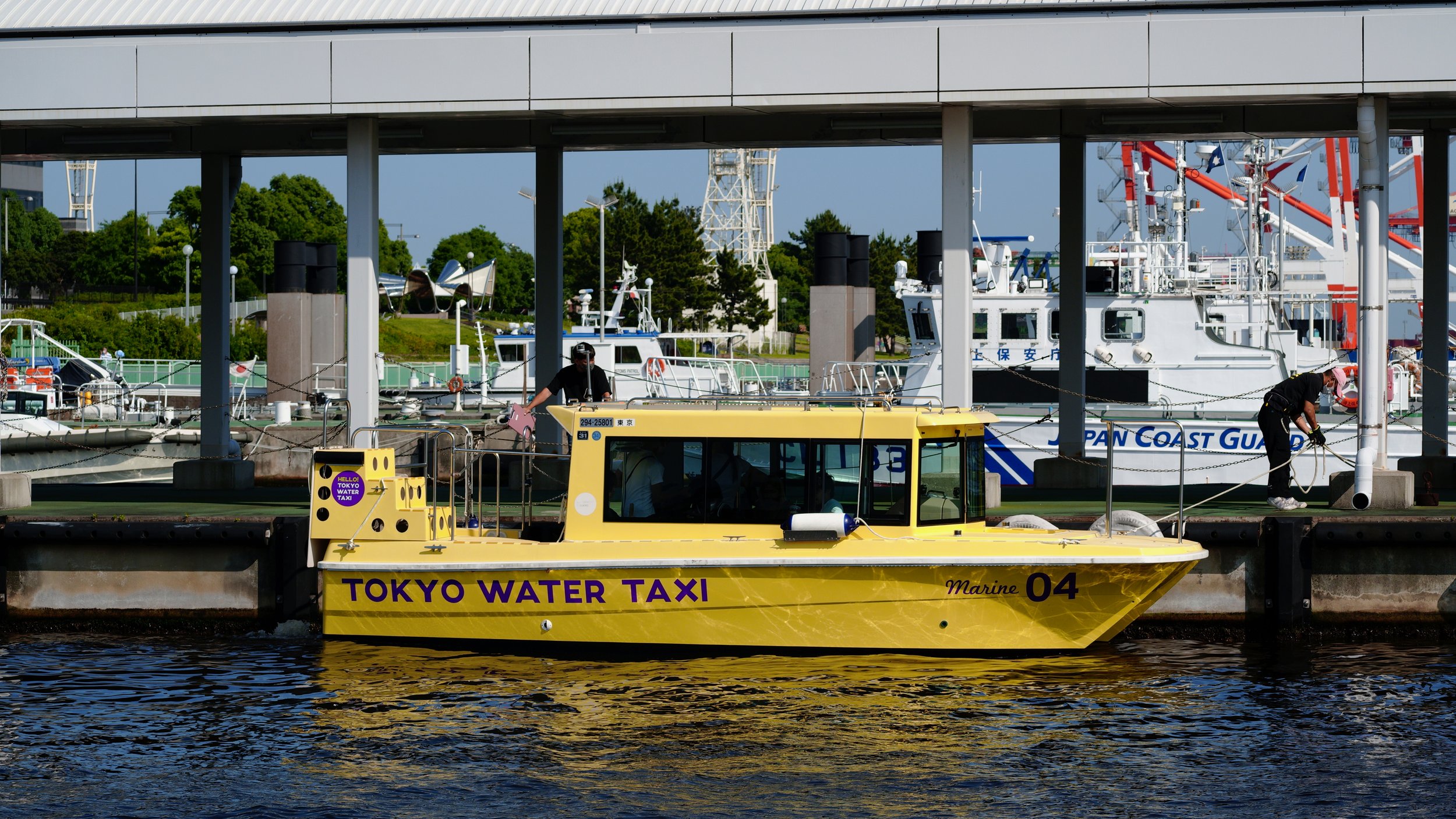
Vanpool over the cliff in the foreground is an exhibition on logistics, labor, and the opposite shore.
The development of ports and the logistics network using containers are significant in the operation of modern urbanization. However, they are far from everyday life. One of the exhibition's goals is to make this opaque landscape visible through narrative imagination and multiple narratives and to bridge the gap between consumer behavior and logistics. As the (unfamiliar) name "Logistics type exhibition" suggests, this exhibition will attempt to examine logistics by developing a spatial expression that focuses on the visual and aural scale and the dynamism of the daily distribution on reclaimed land by intervening at the port.
Participants take on the role of transporting lumber, which is sent to them in advance as a ticket, to a predetermined destination. The lumber has a QR code, and they gather at the departure point using this information as a clue. On board a small vessel, passengers will tour logistics hubs such as the Aomi Container Wharf and Oi Wharf for about 45 minutes. Aokid, the Guide Dance (or Guidance for short), will lead the cruise, capturing, recording, and disclosing the rhythm and scale of the landscape through his body to the audience, sometimes collaboratively dancing on the boat.
Once they reach their destination, they move to the customs broker's tool shed, a minute's walk away, to view Fujikura's works linked to the landscape from the sea. Fujikura's videos insert another layer of space that extends the private image and antagonizes the usable space where various tools and materials are precisely positioned. Mediating by the labor act, the place of logistics and fictional imagination temporarily cross paths.
Participants receive a leaflet in exchange for their cargo (a ticket). The book includes a graphic by Fujikura, Ryosuke Kondo's essay, Naoki Saito's research on drawings of the intrusive and directly visible areas of the Tokyo Bay area, Aokid's research diary, and Ohmura's notes on the fundamental issues of the research and exhibition.
2022年5月、物流・労働・対岸をテーマにした展覧会「手前の崖のバンプール」が東京湾にて開催された。
港湾の整備とコンテナによる物流網は現代の都市・国家の運営における極めて重要な存在だ。しかし、私たちの日常生活からはどこまでも遠い(実際、一般に陸から埠頭の港にアクセスすることはできない)。こうした不透明な風景を、物語的な想像力と複数的な語りによって可視化し、消費行動と物流のあいだにあるギャップを架橋すること。これが、リサーチプロジェクトの最初の成果発表となる「手前の崖のバンプール」展のひとつの目標である。物流型展覧会という(聞き覚えのない)ネーミングの通り、本展では埋立地で日々繰り広げられている物流のダイナミズムと視-聴覚的スケールに注目した空間表現を港湾の現場に介入する仕方で展開することで、ロジスティクス(=物流)の批判的な検証を試みる。
初の物流型展覧会となる本展は、チケットとして事前に送付される材木を所定の目的地まで運輸することを参加者に指示する。材木にはQRコードが掲載されており、参加者はこの情報を手がかりに出発地点(青海埠頭の船着き場)に集合する。小型船舶に乗り込み、青海コンテナ埠頭、大井埠頭といった物流拠点を約45分かけて巡る。
ガイド・ダンス(略してガイダンス)のAokidはクルージングを先導し、風景のリズムやスケールを身体を通して捉え、記録し、観客に開示しながら、ときに共同して船上で踊る。
目的に到着すると、徒歩1分の通関業者の道具場まで移動し、海上からの風景とも連動した藤倉の映像作品を鑑賞する。藤倉の映像(=光)は様々な道具や資材が正確に位置づけられた実務的な空間に対して、私的な想像力を拡張した別の空間のレイヤーを挿入し、拮抗させる。物流の場とフィクショナルな想像力の場が──労働的な行為を媒介に──仮設的にすれ違う。
貨物(チケット角材)を収めた対価として、参加者はリーフレットを受け取る。リーフレットは、藤倉によるグラフィック、近藤亮介の論考「ランドスケープの生まれるところ──東京湾岸覚書」、齋藤直紀による東京湾岸の侵入可能領域と正視可能領域を図面化したリサーチ、Aokidによるリサーチ日誌、大村によるリサーチの基本的な問題意識を書き留めたテキスト「崖っぷちの労働と遊び」を収録。
Project Overview
Name Vanpool over the cliff in the foreground
Date 28 MAY 2022 - 29 MAY 2022
Type Exhibition
Organizer Asako Fujikura
Video & direction Asako Fujikura
Guide Dance Aokid
Venue design Takahiro Ohmura
Research & Writing Ryosuke Kondo
Research & Map Naoki Saito
Video recording Yuri Sato
Photography Takuto Ota
Public relations Mizuha Kaneko
Publication
ウェブ版 美術手帖 Review(文=中島水緒) →
有識者が選ぶ2022年の展覧会ベスト3:中島水緒(美術批評家)→
有識者が選ぶ2022年の展覧会ベスト3:吉田山(アート・アンプリファイア)→
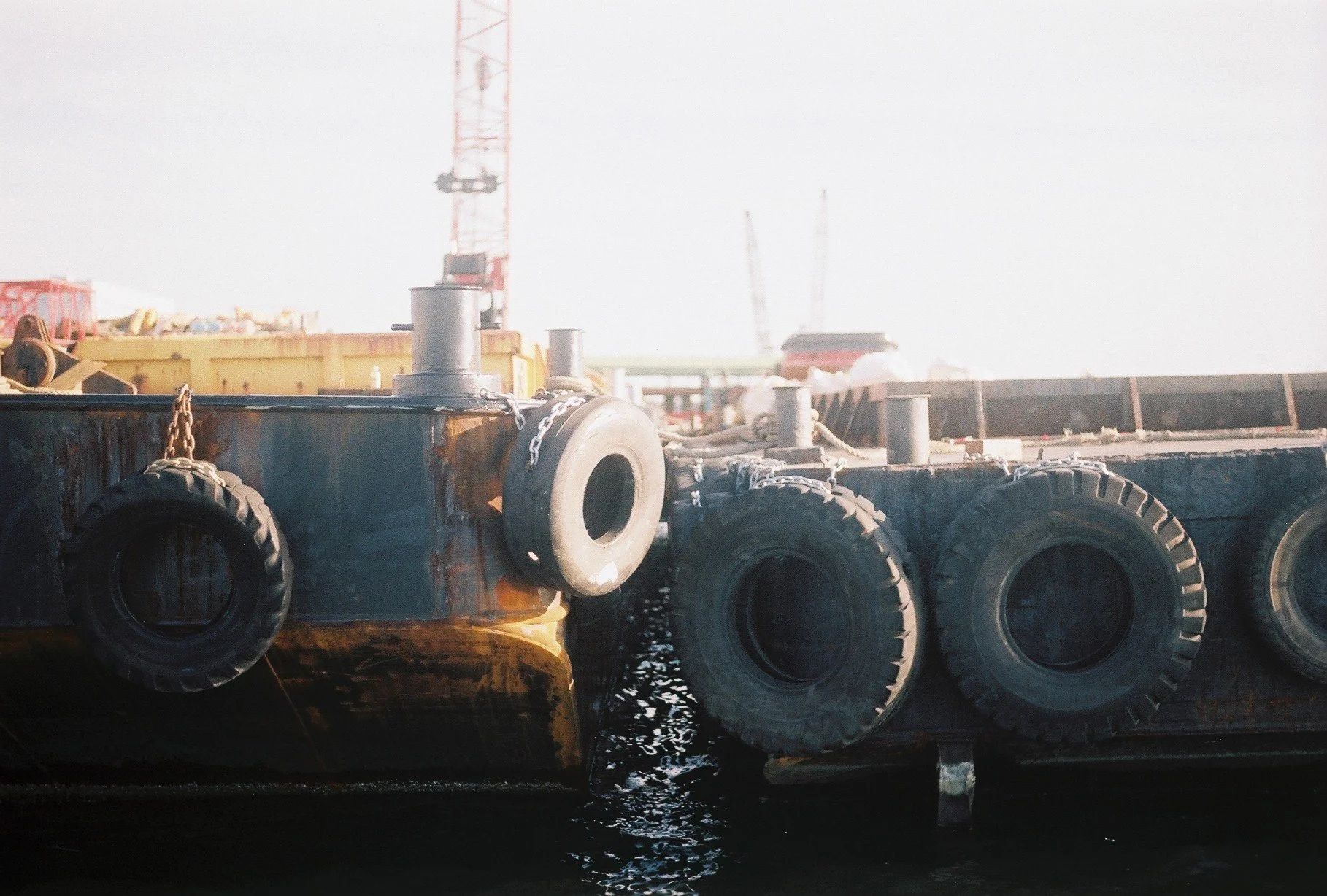
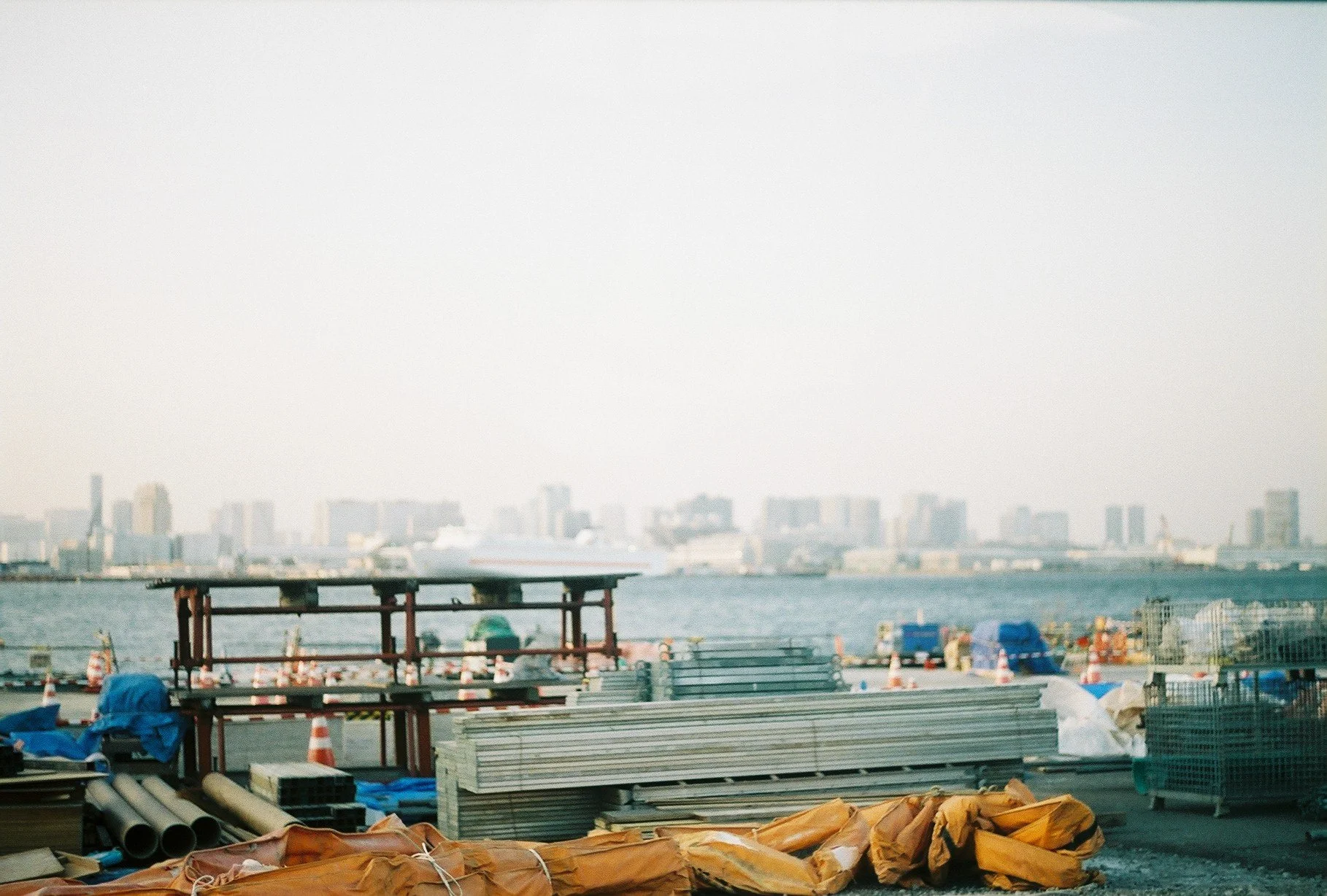
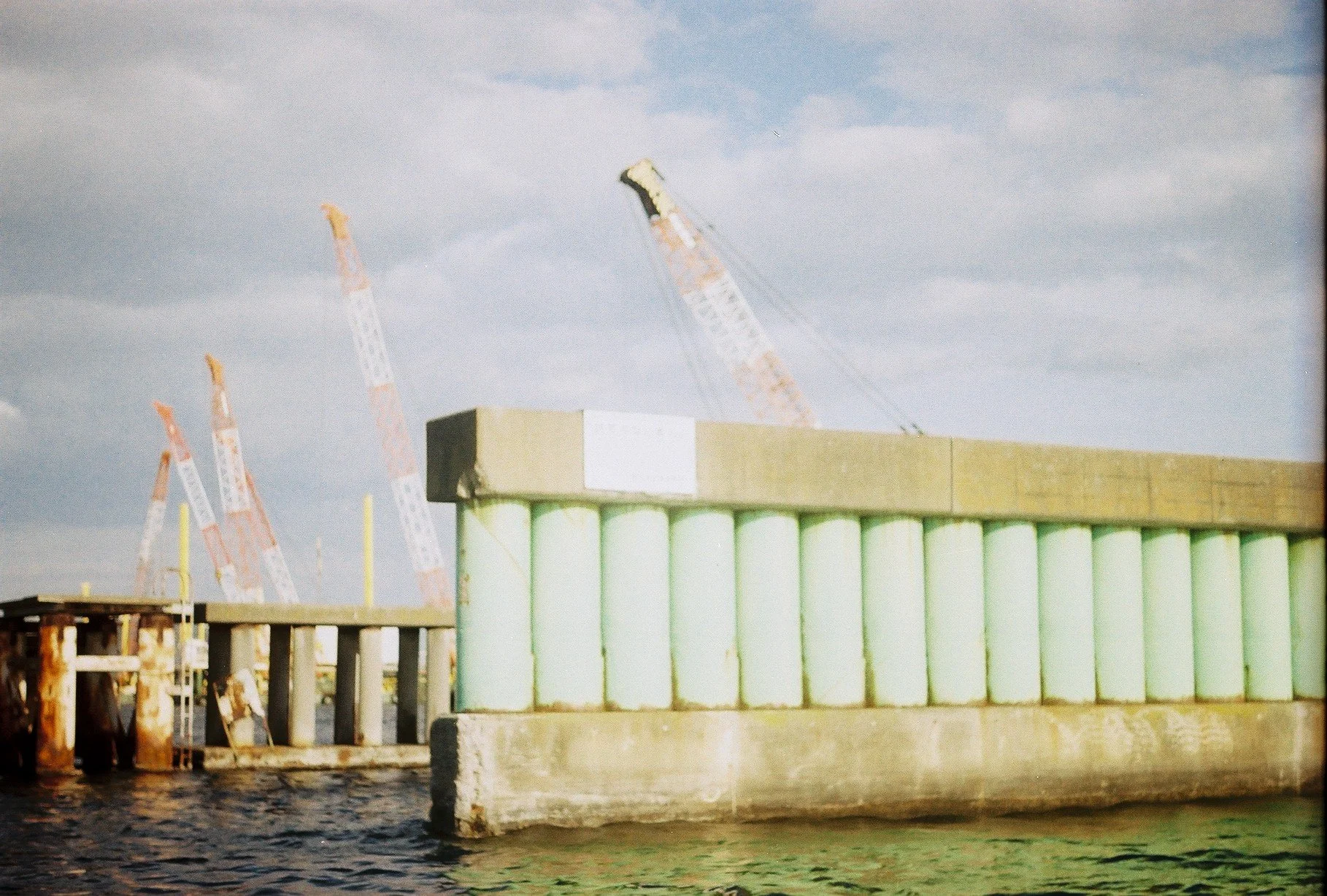
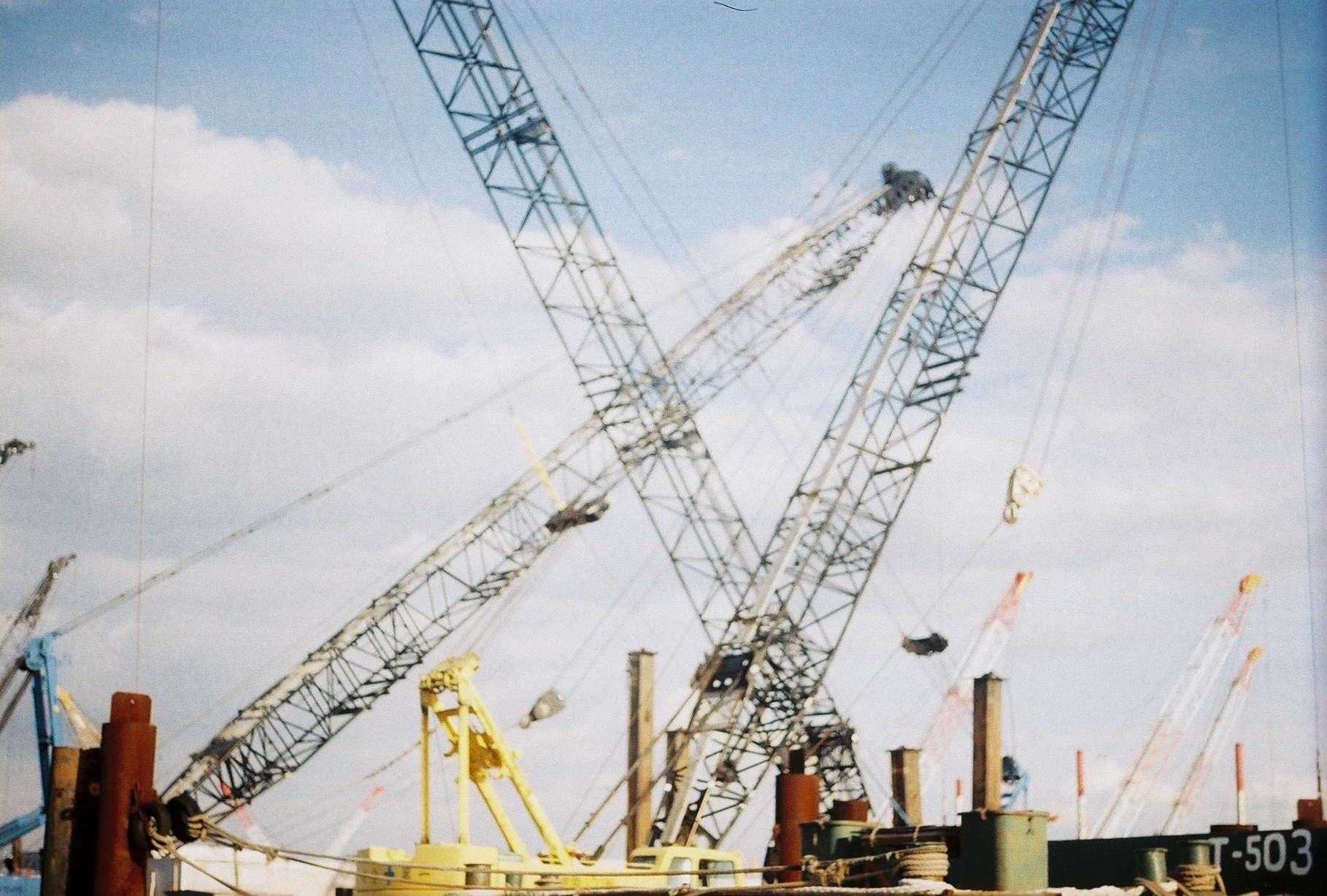
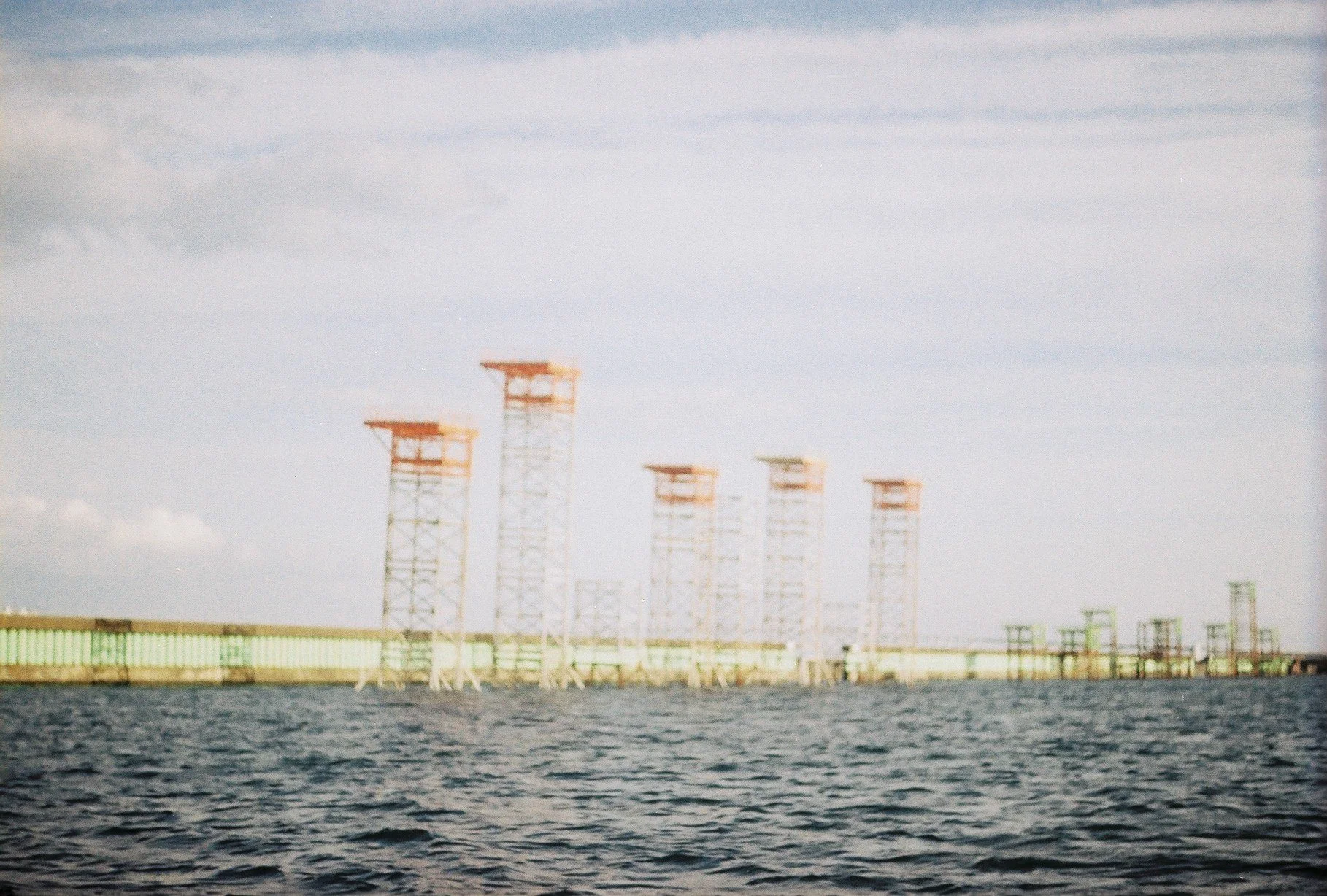
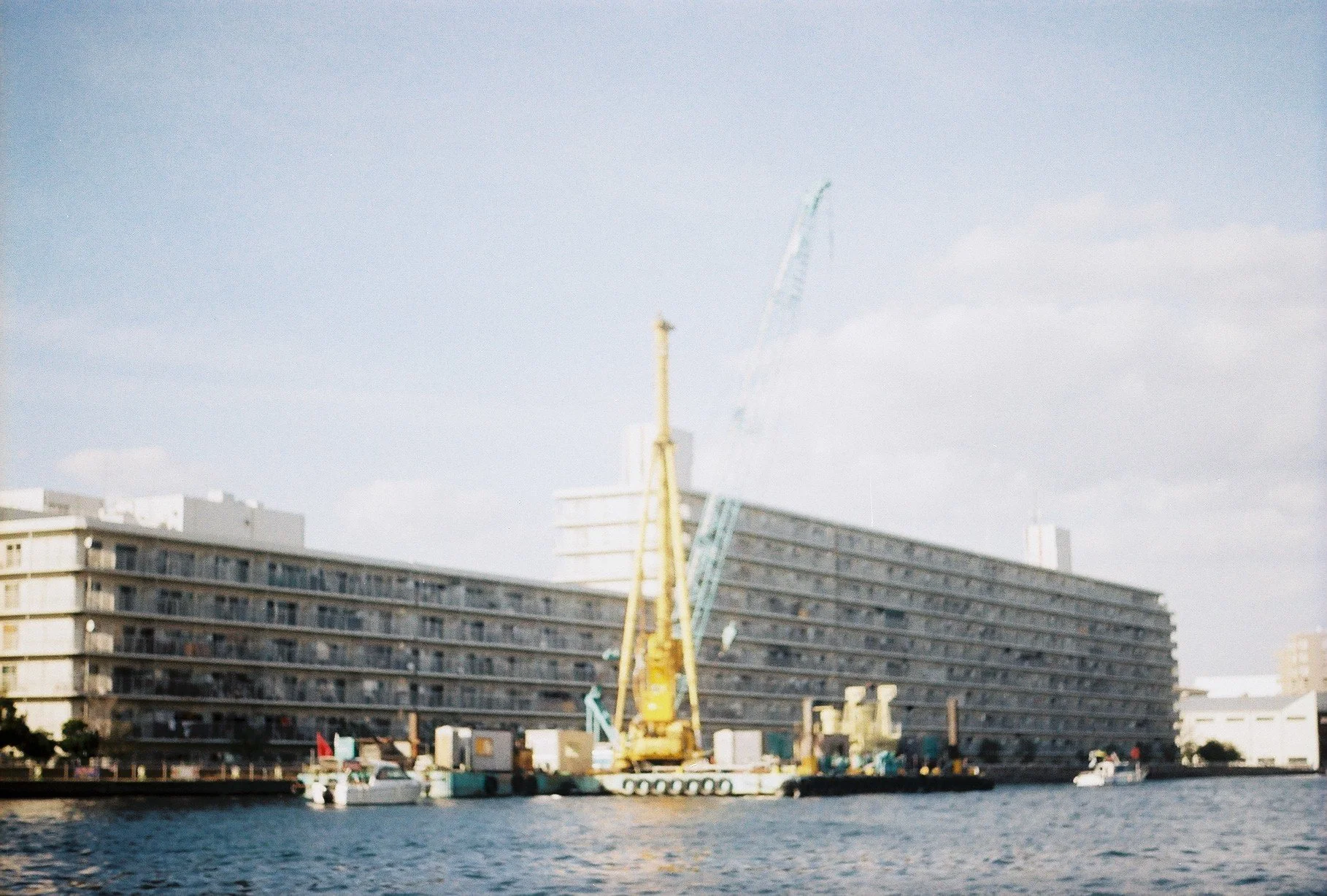
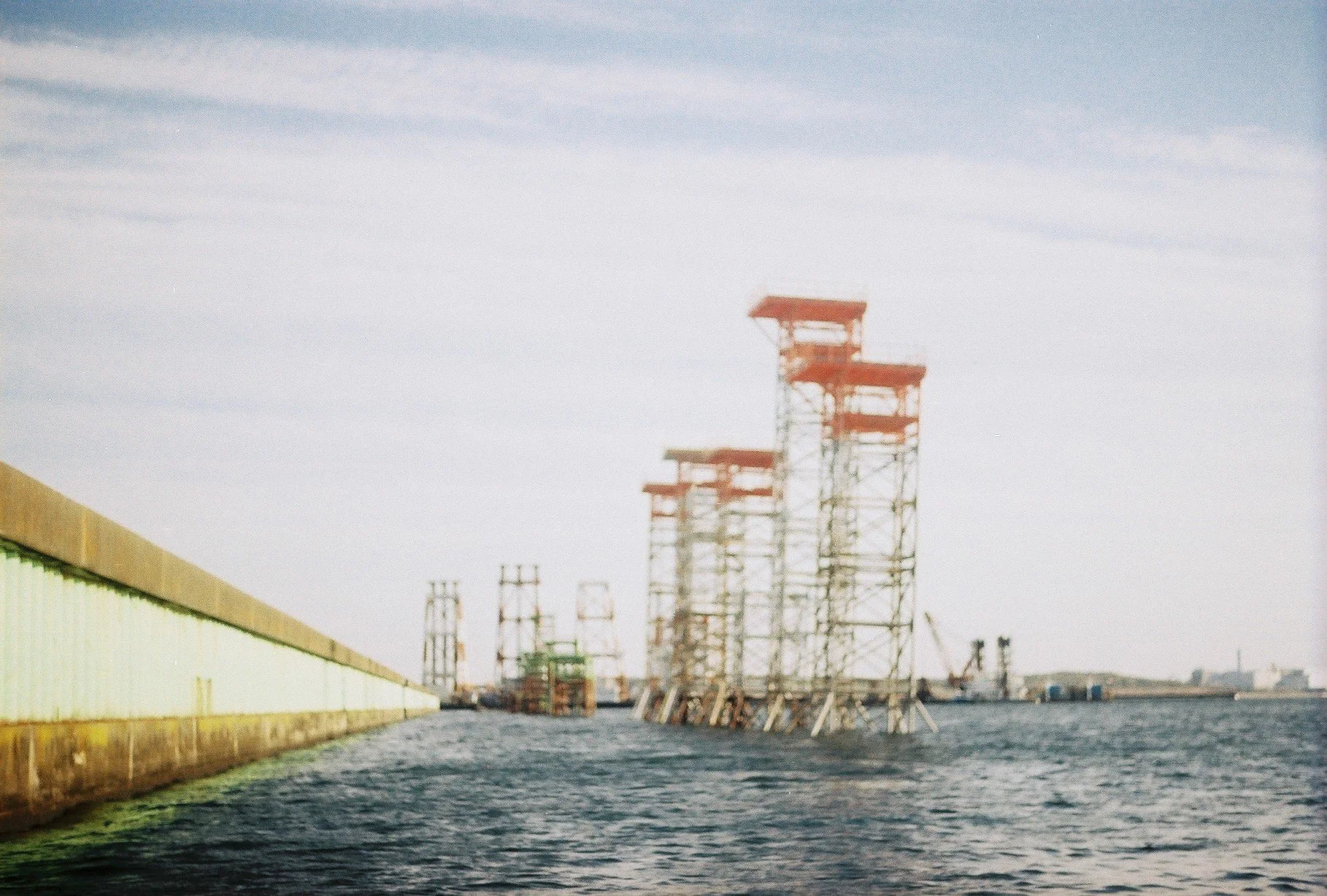

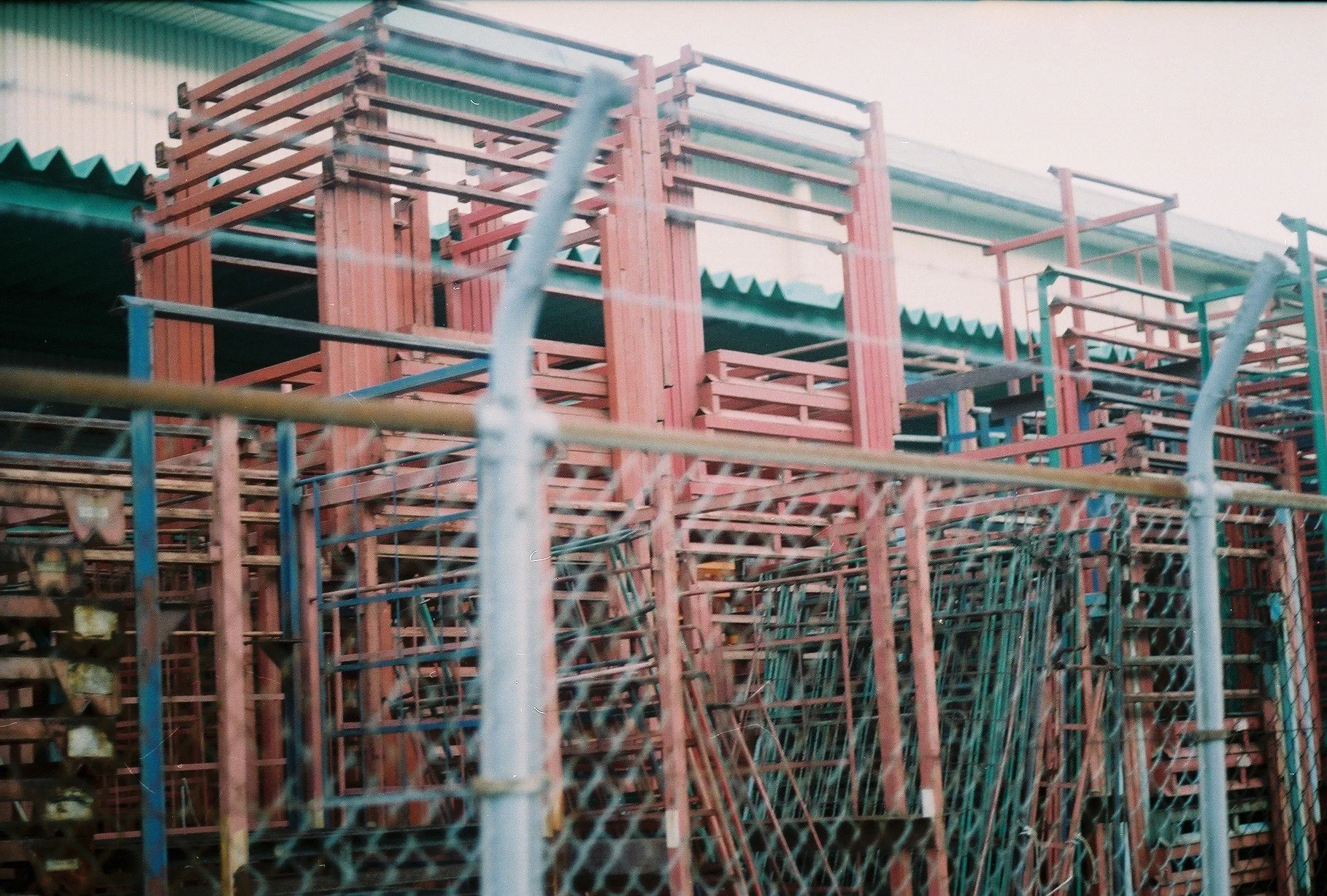
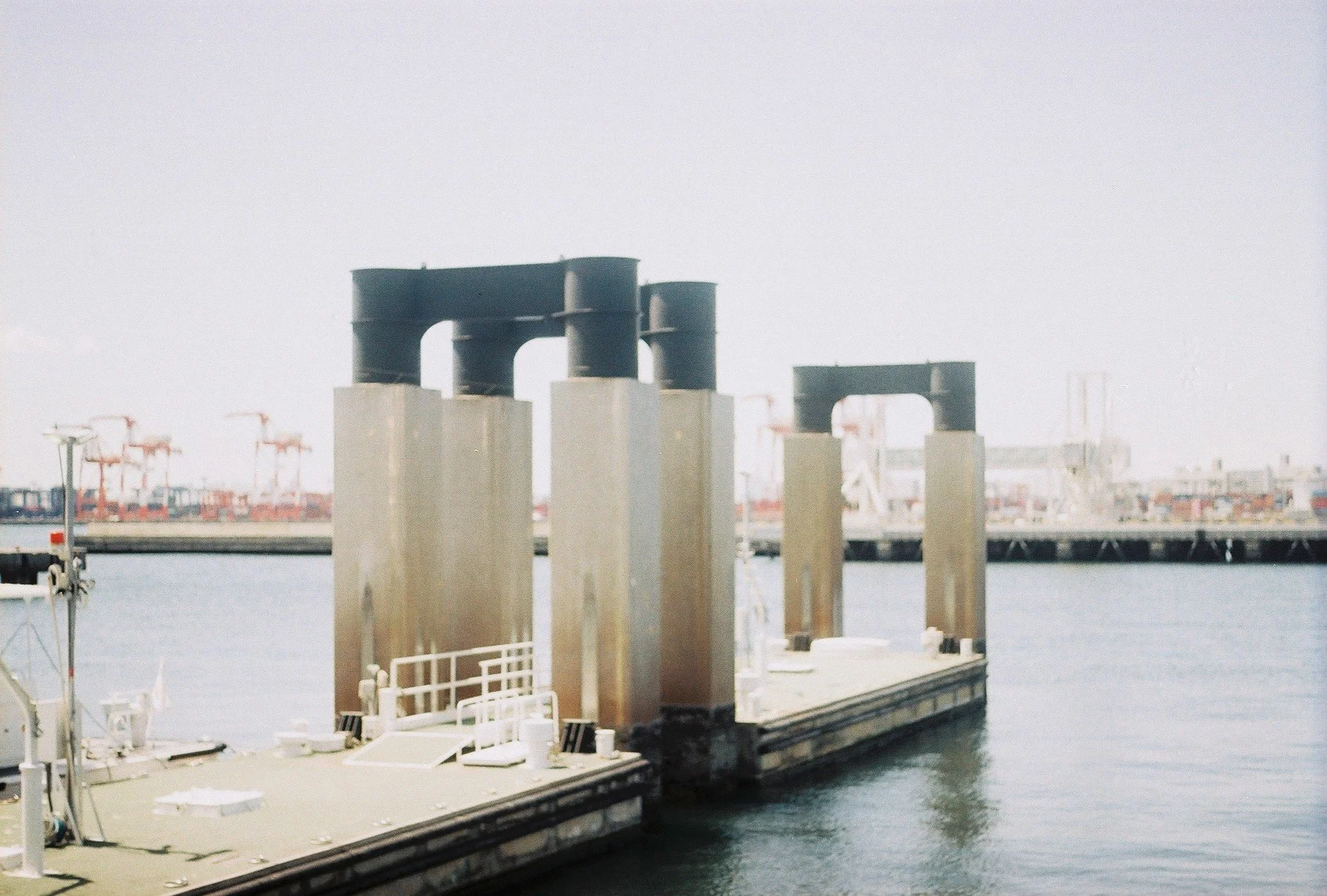

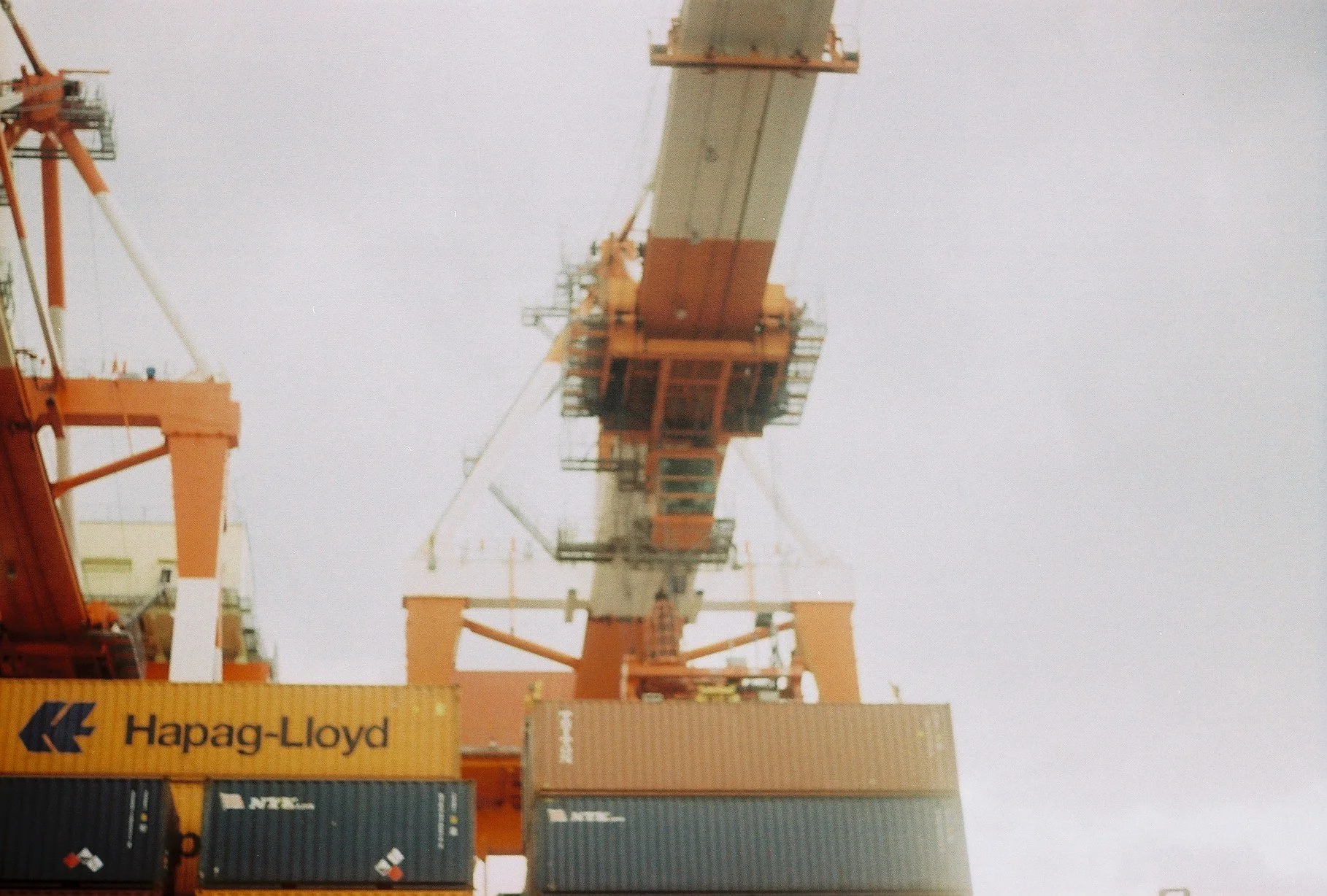
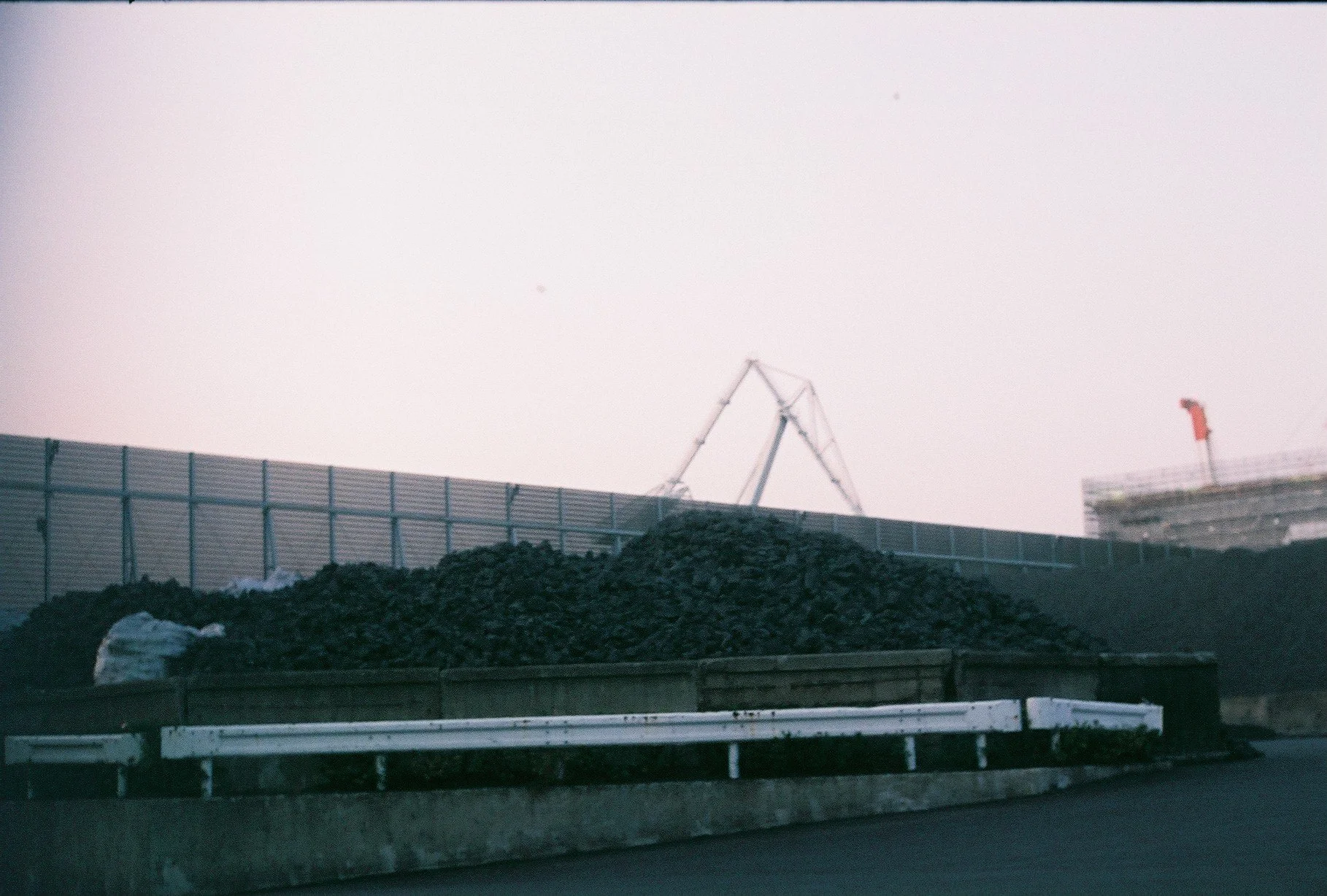
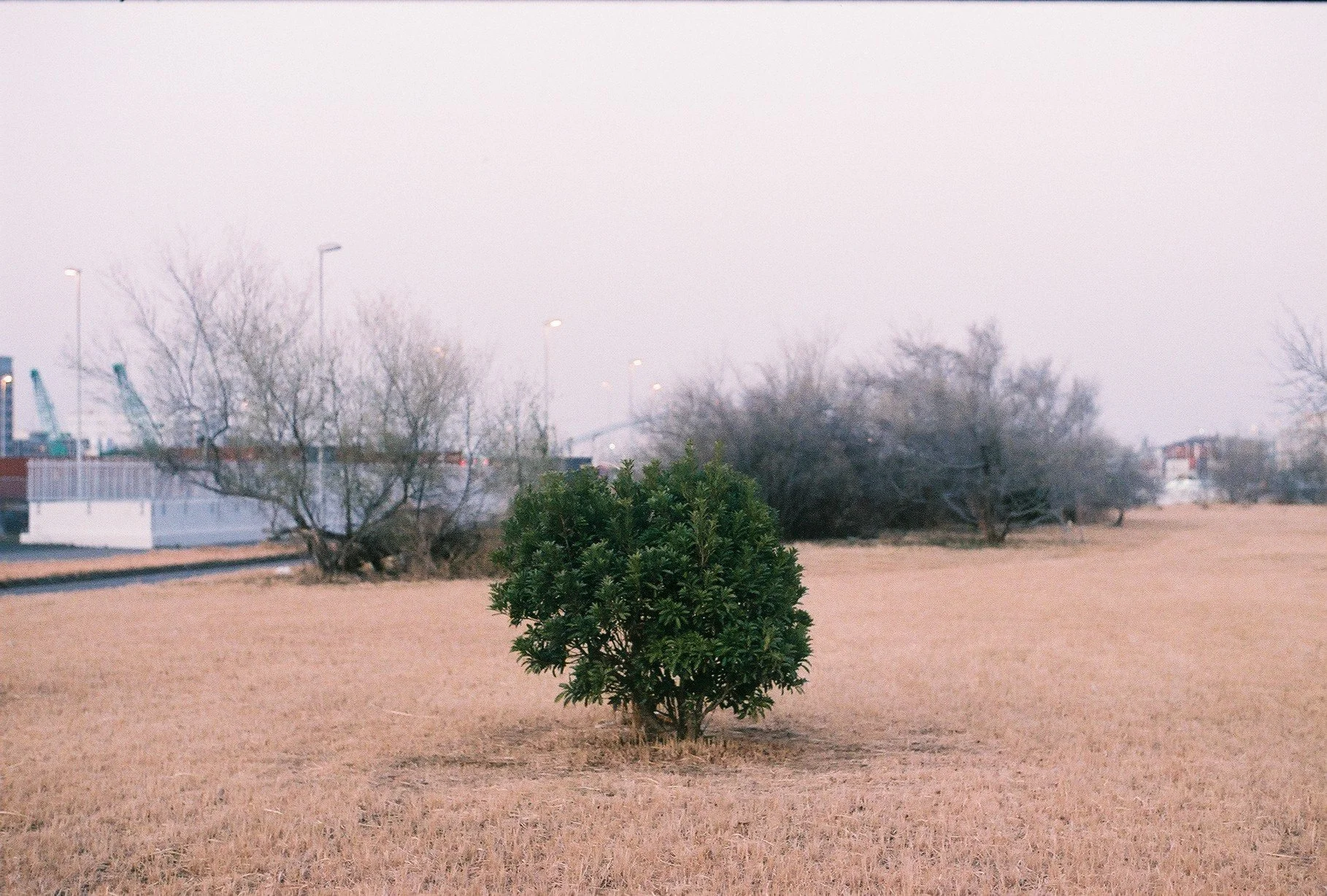
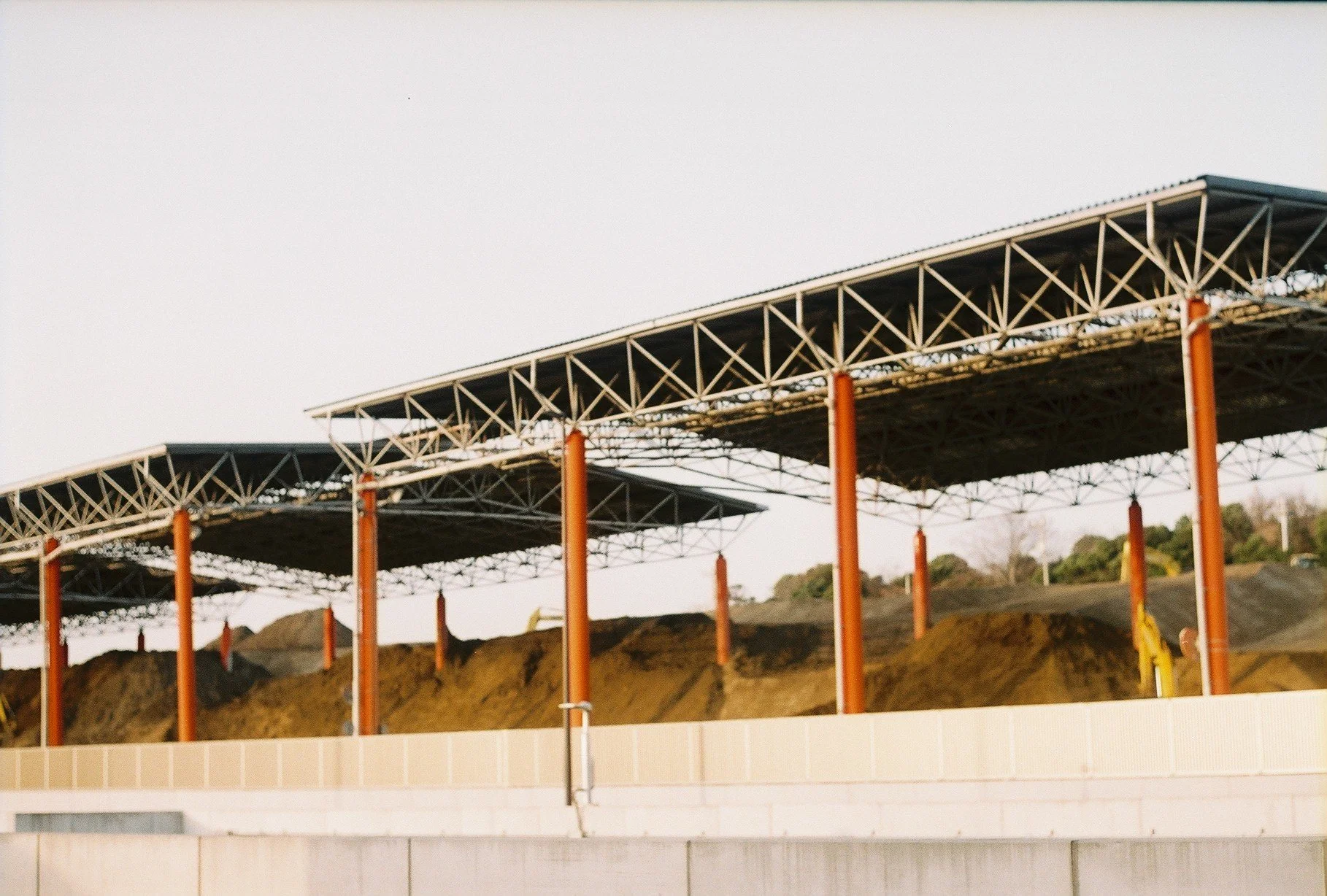

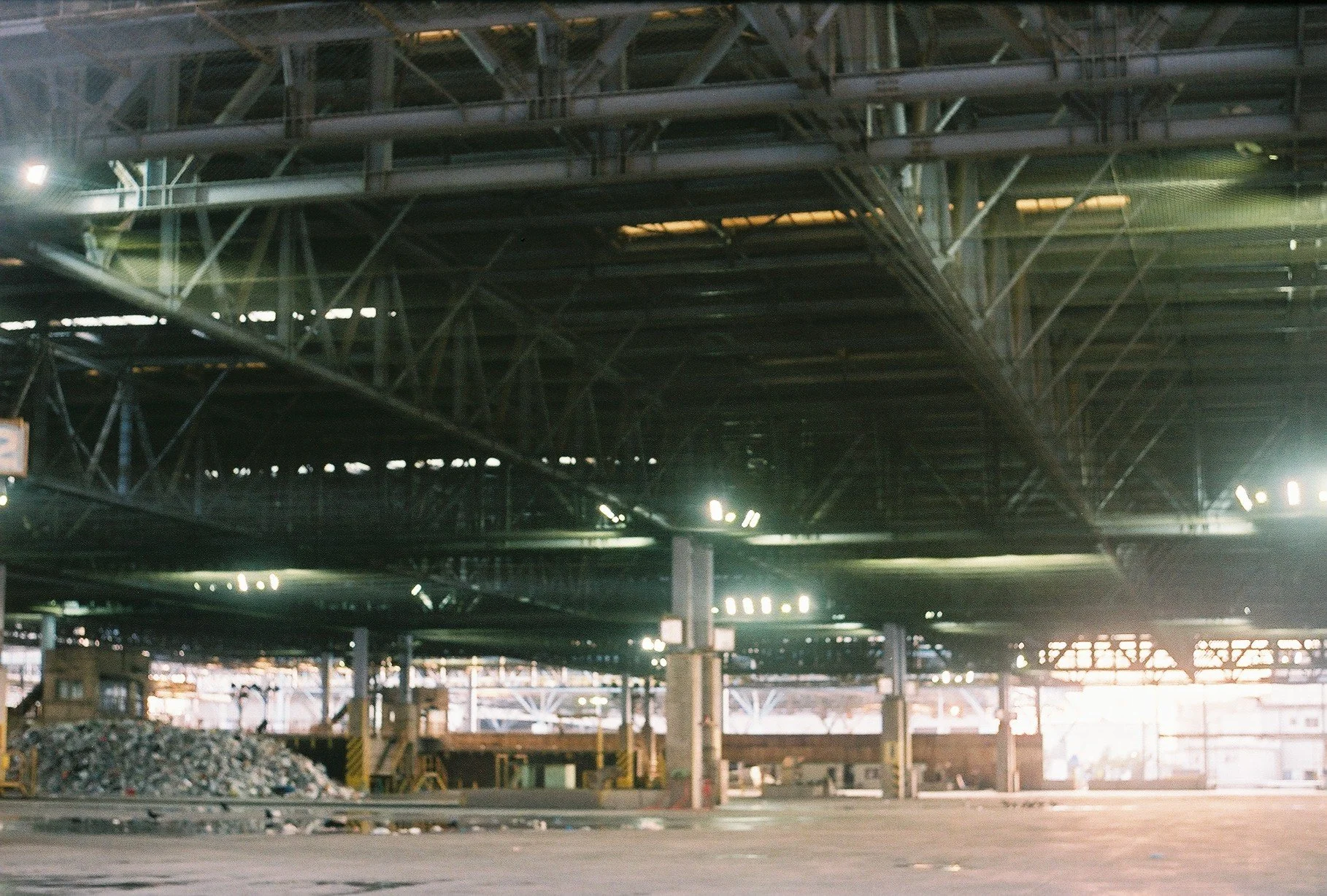
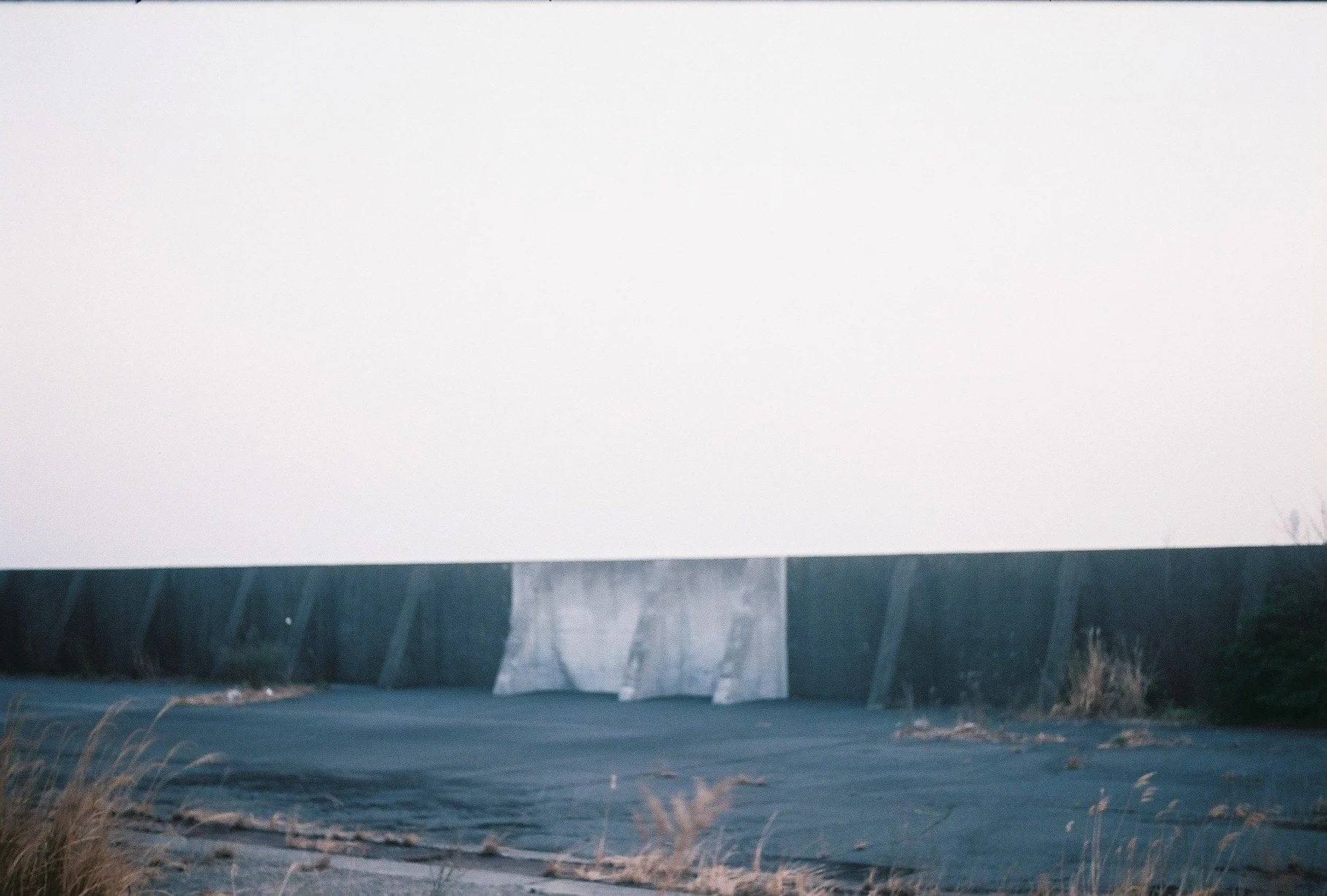
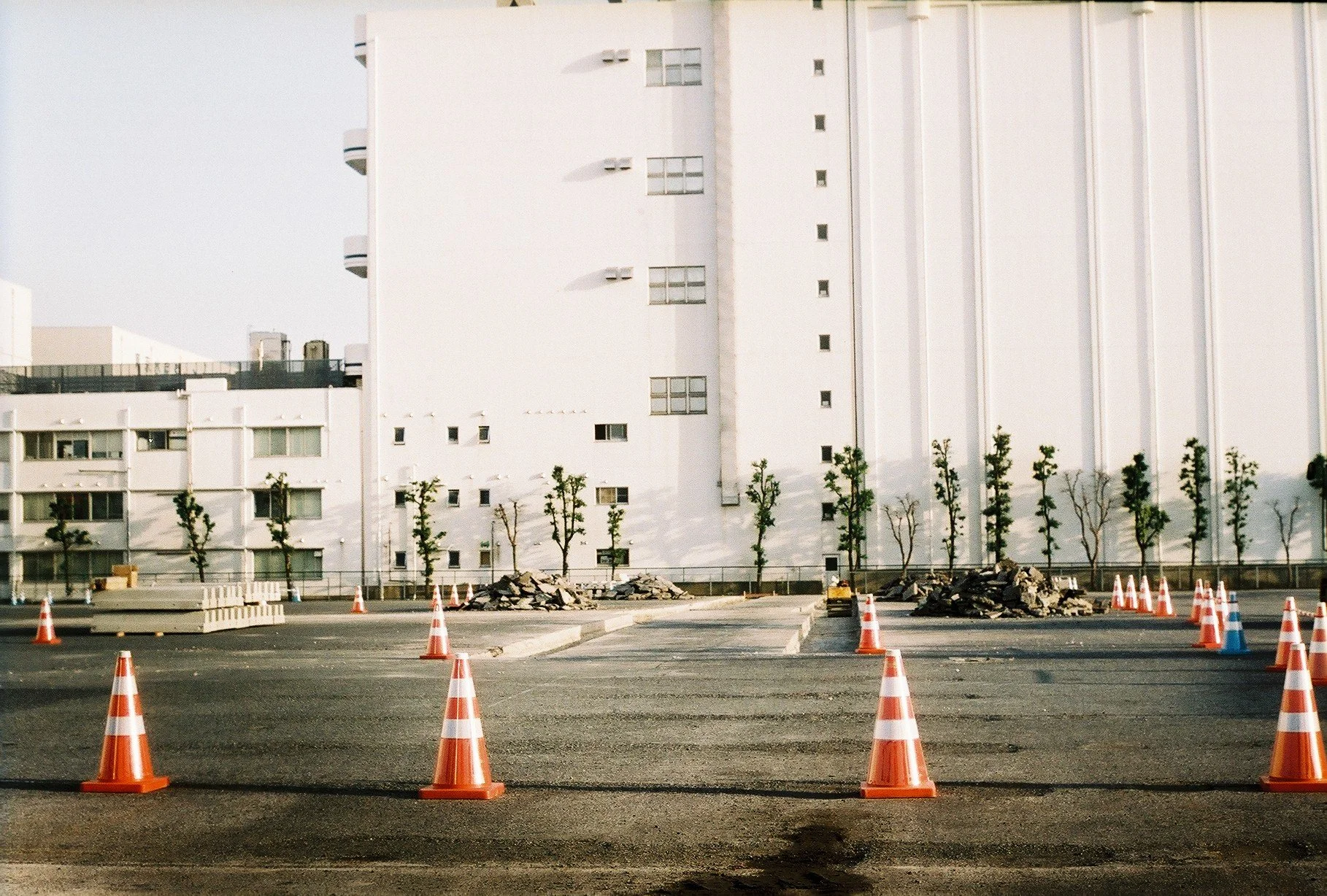
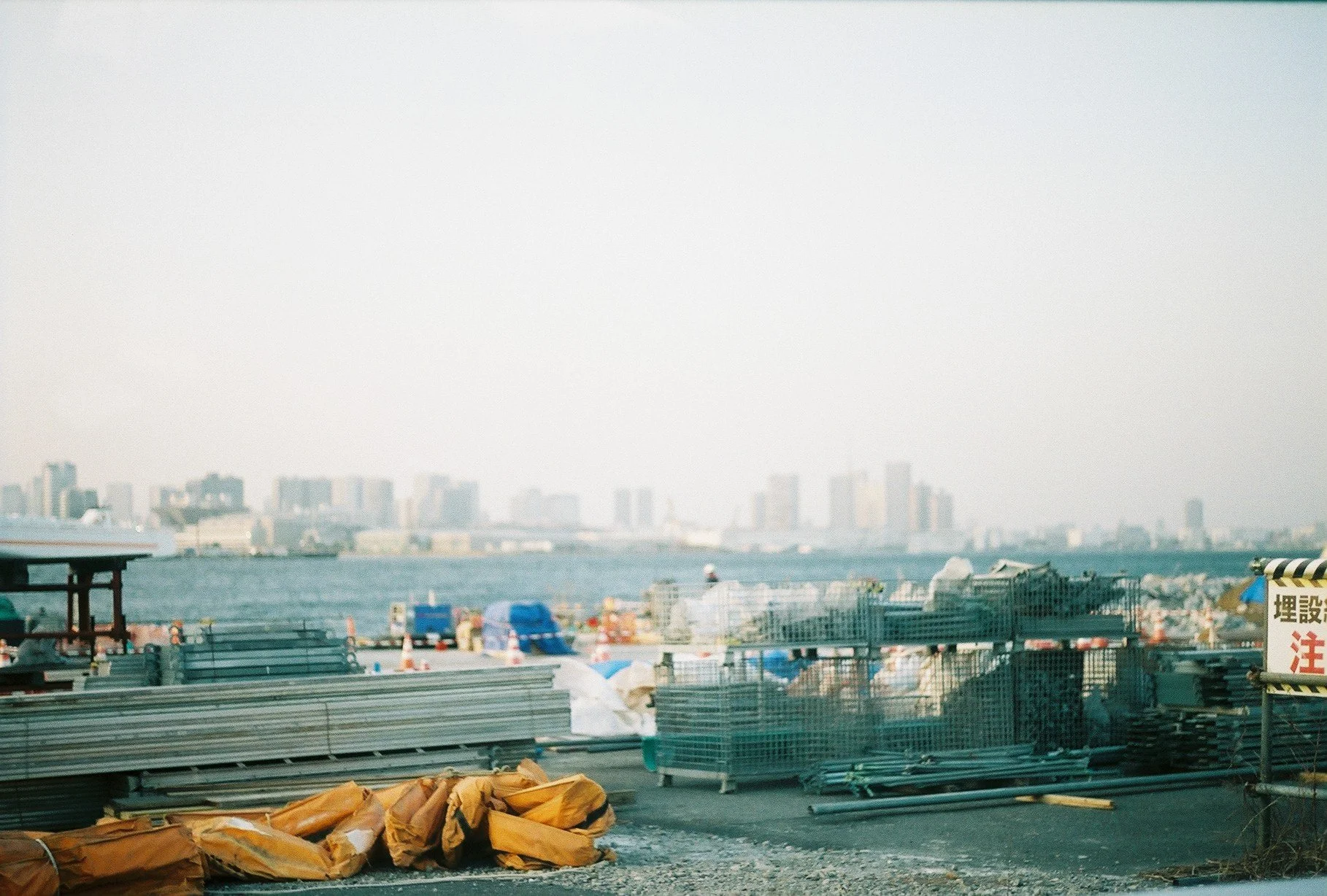

research photography Asako Fujikura